They’ll help you navigate challenges, build relationships, and create a unique brand. Think of them like the essential ingredients in your baking pantry: they’re necessary for ensuring a perfect outcome.
Ready to discover these secret ingredients for success? Keep on reading to find out more!
Editor’s Note: This was originally published back in 2018. It has been updated today, June 17, 2024.
What are business virtues?
In the context of any business, virtues refer to the positive character traits, values, and ethical principles that guide decision-making and actions within a company. These virtues play a crucial role in running a successful food business.
Businesses that uphold strong virtues are more likely to earn trust, build lasting relationships, and achieve long-term success. Having these virtues fosters a positive company culture and attracts and as well as retains customers, leading to increased profitability and sustainable growth.
For example, imagine a home baker known for their delicious cupcakes. They consistently use fresh, high-quality ingredients, demonstrating integrity and a commitment to quality, plus they note dietary restrictions, showing respect for their customers. The baker also donates leftover cupcakes to a local shelter, demonstrating social responsibility.
These virtues, woven into every aspect of their business, cultivate a loyal customer base and contribute to their overall success.
The Eight Business Virtues For Your Food
Now, let’s delve deeper into eight specific virtues that are essential for achieving success in the food industry.
Integrity
Integrity is the foundation of a successful food business. It means being honest and truthful in everything you do, even when no one’s watching. In the food industry, trust and safety are super important, so integrity is a must.
How do you know if your business has integrity? Look for these signs:
- Customer trust: People believe in you and your food.
- Customer loyalty: They keep coming back for more and tell their friends.
- Long-term success: Your business keeps growing and doing well over time.
Think of integrity as a secret ingredient that makes your business delicious in more ways than one!
Accountability
Accountability means taking responsibility for your actions and decisions. In the food industry, this means owning up to mistakes and quickly correcting them. Like integrity, this virtue is essential for building customer trust, fostering a positive work environment, and ensuring compliance with food safety regulations.
Here’s how accountability benefits your food venture:
- Builds customer trust: Customers appreciate honesty and knowing you’ll fix any problems.
- Fosters teamwork: If you have employees, being accountable sets a good example for them to follow.
- Ensures compliance: You follow food safety rules to keep your customers safe and avoid legal trouble.
Transparency
Transparency is crucial for food businesses, as it involves being open and honest with customers about ingredients, processes, and practices. This leads to building trust in your brand and allows customers to buy from you, knowing that your products align with their preferences and values.
For example, if you have an online cookie business, you should list all ingredients to ensure food safety, provide accurate nutritional information, and help customers make informed choices.
Transparency leads to:
- Customer confidence: People feel good about what they’re buying.
- Better issue management: You can quickly address any problems.
- Competitive advantage: Your honesty sets you apart. Additionally, if you publicize that you’re using high-quality ingredients, you can attract customers seeking premium products!
Fairness
Fairness is a core value for any successful business. It involves treating everyone equally and with respect, whether they are customers, employees, or suppliers. This means charging fair prices, paying employees a just wage, and ensuring timely payments to suppliers.
For example, suggested retail prices (SRPs) help maintain consistent pricing across different stores, ensuring customers are treated fairly regardless of where they shop.
Fairness in your business practices leads to:
- Customer trust: Customers feel valued when they know they’re being charged fairly and treated equally.
- Better employee morale: Fair treatment and compensation boosts employee morale and loyalty, leading to a more productive team.
- Strong supplier relationships: Paying your suppliers on time and offering fair terms cultivates positive relationships, ensuring a reliable supply of quality ingredients.
Resilience
Resilience is essential in the ever-changing food industry. Challenges are inevitable, from unexpected ingredient shortages to shifting consumer trends.
A real-life example of resilience is how the restaurant industry adapted during the COVID-19 pandemic. Since dining in was not possible, they innovated with takeout and delivery services, outdoor dining, and virtual cooking classes.
How can resilience benefit your food business?
- Grace under pressure: When faced with setbacks, you find solutions and keep moving forward.
- Adaptability: No matter the food trends that come up or what preferences customers suddenly have, you can embrace change and adjust your strategies to stay competitive.
- Positive mindset: You maintain optimism and motivate your team, even during tough times.
Innovation
Innovation is the key to keeping your food business fresh and exciting. It means thinking of new ideas for your dishes, services, or marketing strategies to attract and retain customers.
For example, if you want to start a Filipino restaurant, you could develop a unique fusion menu blending traditional flavors with international cuisine or offer innovative online ordering options to enhance convenience.
How innovation drives success:
- Competitiveness: Unique dishes and approaches set you apart from the competition.
- Happy customers: New and improved offerings keep customers engaged and coming back for more.
- Business growth: Expanding your menu or services to cater to emerging trends can attract new customer segments and boost your bottom line. For instance, making keto desserts in response to customer demand could attract a new group of customers!
Remember, innovation is not just about being different; it’s about creating value for your customers and staying ahead of the curve.
Customer-centricity
Customer-centricity means putting your customers at the heart of your business. This approach prioritizes their needs and preferences, ensuring their satisfaction and loyalty.
For example, a successful Mediterranean restaurant might prioritize customer feedback to improve its menu, ensuring that dishes are consistently fresh and delicious.
Customer-centricity drives success through:
- Customer satisfaction: Prioritizing customer needs and preferences leads to happy customers, who are more likely to return and recommend your business to others.
- Customer loyalty: When customers feel heard and valued, they become loyal patrons, choosing your establishment over competitors.
- Valuable feedback: Actively seeking and responding to feedback, both positive and negative, allows you to continuously improve and meet evolving customer expectations.
Social Responsibility
Social responsibility means caring about your community and the environment, not just profits. It’s about giving back and making a positive impact. For instance, you can use sustainable ingredients, minimize waste, and support local farmers by buying from them instead of the groceries.
How social responsibility benefits your business:
- Community support: Giving back to the community through donations or sponsorships fosters goodwill and attracts customers who value social impact.
- Environmental impact: Reducing your environmental footprint through sustainable practices appeals to eco-conscious consumers and can enhance your brand reputation.
- Customer trust: As mentioned above, customers are more likely to trust and support businesses that align with their values, such as environmental consciousness and community engagement.
By prioritizing social responsibility, you contribute to a better world and build a loyal customer base that values your commitment to something greater than just profits.
Now, here’s something else you need to know: while having these business virtues is important for running a successful food business, they’re not the only ingredients for success. You also need practical knowledge and skills to navigate the unique challenges of the food industry. But hey, you don’t have to look far to learn how to grow a successful business.
The answer is right here inside The Bailiwick Academy.
Join The Bailiwick Academy’s Food Business Bootcamp!
The TBA Food Business Bootcamp is a 14-week program that will give you the correct foundation to build and sustain a food business.
Here’s a sneak peek of what you’ll get inside the boot camp:
- Entrepreneurial Mindset: Spot untapped opportunities and stay ahead of food industry trends.
- Soul Branding: Identify your superpowers and attributes that set you apart to form an unforgettable brand identity.
- Branding 101: Develop a distinctive brand voice and an attention-grabbing visual identity.
- Business Basics: Avoid pitfalls that make 90% of new food businesses fail within the first year.
- Menu Planning: Master crafting irresistible menu items that keep customers coming back.
- Human Resources: Develop employee contracts, handbooks, and policies that protect your business.
- Marketing and Sales: Ignite buzz by creating irresistible social media campaigns that compel customers to share your brand.
- Accounting: Learn proven food costing techniques to price your menu items for optimal profitability.
- Food Costing: Discover inventory management hacks that lower costs and wastes, and give you high profit margins.
- Legal Fundamentals: Safeguard your food business from legal catastrophes by discovering the permits, licenses, and registrations you cannot overlook.
- Employment Law: Draft contracts that attract top talent, incentivize peak performance, and shield your business from legal backlash.
- Business Planning: Mesmerize investors, lenders, and partners with a business plan presentation that has them begging to fund your food empire.
This program is a comprehensive guide to building a low-risk, low-maintenance, high-profit food business. If you’ve been dreaming of turning your passion for food into a thriving business, this boot camp might just be the thing to help you get truly started!
Click here to secure your slot, and finally make your food venture dreams a reality!
—
Keep coming back to The Bailiwick Academy blog for more kitchen tips, tricks, and much more!
]]>If yes, then keep on reading, because that’s exactly what this article is going to be about!
So… what IS chicharon?
Chicharon (sometimes spelled as tsitsaron) is a versatile and popular snack made from deep-fried, crispy pork rinds. It’s a favorite Pinoy snack that can also be eaten as a pulutan (finger food), or tapas paired with alcoholic beverages. Often, chicharon is savored with spiced vinegar, adding a tangy kick to its crunchy delight.
Some people also use chicharon as a garnish in various Filipino dishes such as pinakbet (vegetable stew) and palabok (a noodle dish you can make with Chef Chona Garcia’s class here at The Bailiwick Academy, Classic Pinoy Favorites).
Aside from the original version made from fried pig skin, there are various types, including premium versions made from pork skin with fat or meat, and regional varieties like chicharon bulaklak (made from ruffle fat) and chicharon bituka (made from intestines). If you’re curious about these varieties, don’t worry; we’ll get to them below!
Origins of Chicharon
What country is chicharron from? Well, it’s believed to have originated in Spain, specifically in the region of Andalusia (like Arroz con Pollo!). The term “chicharron” comes from the Spanish word for pork rind and is believed to be an onomatopoeia of the whistling and crackling sounds produced when it is cooked.
While the dish was supposedly brought to the Philippines during the Spanish colonial era, some suggest that chicharon may have existed in the pre-Hispanic Philippines, with evidence of native endemic pig fossils found in the Callao Caves in Cagayan, carbon-dated to be 60,000 years old. Regardless of its precise origin, chicharon has become a quintessential Filipino snack—something we’re glad about, agree?
Types of Filipino Chicharon
As mentioned above, Filipino chicharon comes in various forms, not just the usual one we all know and love. Let’s explore these different types.
Chicharon Bulaklak
Chicharon bulaklak is a popular type of chicharon made from pork intestines that are deep-fried in hot oil or pork lard. So if you’ve ever wondered what part is chicharon bulaklak, now you know!
Despite its high fat and cholesterol content, which can be harmful to your health, chicharon bulaklak remains a favorite snack due to its irresistible rich flavor and texture. You can enhance your enjoyment of this dish by dipping it in spicy vinegar or even pairing it with rice!
Chicharon Bituka
Chicken Chicharon
As mentioned, chicharon isn’t limited to pork. Chicken chicharon, made from deep-fried chicken skin, is also a popular street food and is a great alternative for those who prefer chicken over pork. Enjoy it with steamed rice and spiced vinegar for dipping.
To prepare chicken chicharon, marinate the chicken skin in a mixture of seasonings like garlic, onion powder, peppercorn, vinegar, and salt before coating it in seasoned flour. You can also find this tasty snack at sari-sari stores, street vendors, restaurants, and supermarkets
Fish Chicharon
Fish chicharon, or fisharon, is a healthier alternative to pork chicharon. Made from dried and fried fish skin, fisharon offers a crispy and delicious snack that’s similar to pork rinds but with a unique flavor that’s both crispy and slightly fishy.
You can use various types of fish to make fisharon, such as codfish, tuna, bangus (milkfish), or tilapia. Fish chicharon, like the version made from catfish, provides a safer and permissible option for Muslim individuals who avoid pork.
Vegetarian and Vegan Alternatives
Did you know that there are also plant-based chicharon options? These options can be made from mushrooms, tofu, or even jackfruit, seasoned and fried to mimic the crispy texture of traditional chicharon. They’re a great option for anyone looking to enjoy a meat-free version of this popular snack.
Isn’t it great that whether you prefer the traditional pork chicharon or want to explore newer variations, there’s a chicharon for everyone to enjoy?
How To Make Chicharron
Curious about making some chicharon at home? Here’s a simple recipe with ingredients to get you started.
Ingredients
To make chicharon, start by choosing your preferred meat:
- Pork Rinds (for chicharon baboy): Select good quality pork skin with some fat.
- Pork Mesentery (for chicharon bulaklak): This is the fatty tissue around the intestines.
- Pork Intestines (for chicharon bituka): Ensure they are thoroughly cleaned.
- Chicken Skin (for chicken chicharon): Any part of the chicken skin will do.
- Fish (for fish chicharon): Common choices are tilapia or bangus, but you can also use tuna.
Don’t forget seasonings! Basic ones include salt, pepper, and garlic powder, but you can customize your chicharon with other spices like paprika, chili powder, or your favorite seasoning mix.
Initial Instructions
- Clean and boil the meat: Rinse your chosen meat thoroughly with water. After that, place them in a large pot and cover with water. Add a bit of vinegar and salt, then bring to a boil. Simmer until the meat is tender.
- Dry the meat: After boiling, remove the meat and pat it dry with paper towels. The drier the meat, the crispier the chicharon will be.
- Season the meat: In a mixing bow,, season the meat with salt, pepper, garlic powder, and other desired spices. Make sure each piece is evenly coated.
Cooking the Chicharon
There are many ways to cook chicharon. Choose one that best fits your kitchen setup and preferences.
- Deep-frying: The traditional way to make chicharon, where you use a deep-fryer or a large frying pan. Heat enough oil to fully submerge the chicharon pieces and cook until golden brown.
- Baking: Baking is a healthier alternative to deep-frying. It’s also less messy and still gives you a nice crunch. Remember to preheat your oven to 375°F or approximately 190°C and bake for about 30-40 minutes, or until golden and crispy.
- Air-frying: Using an air fryer is another healthier alternative, since you will be using less oil. It’s also faster than baking. To get the perfect crunch, preheat your air fryer to 375°F/190°C. When you put your meat in the air fryer, arrange to make sure that the pieces are not overlapping. Air-fry the chicharon for about 15-20 minutes, and shake the basket halfway to ensure even cooking.
When you’re done, let your chicharon cool before serving. Enjoy!
Tips and Tricks for Better Homemade Chicharon
Making chicharon at home can be a fun and rewarding experience. To assist you in achieving the best chicharon, here are some additional things you need to know.
How to Pick the Perfect ‘Meat’ or Chicharron Animal Skin
- Pork rinds: Look for pieces with a good balance of meat and fat. The skin should be thick and free from any discoloration. If you’re using pig intestines or mesentery, make sure they are fresh and properly cleaned.
- Chicken skin: Use skin from any part of the chicken. Make sure it’s fresh and free from feathers. A thicker skin can give you a better crunch.
- Fish: When choosing fish, make sure it has clear eyes and a clean smell. We recommend fresh tilapia, bangus, or tuna for fisharon.
Common Mistakes to Avoid
- Not boiling the meat: This is an essential part of preparing chicharon as it tenderizes and renders out some of the meat’s fat. Skipping this could result in a tough and chewy chicharon.
- Not drying the meat properly: If the meat is too wet, it won’t crisp out properly when fried.
- Using low-quality oil: Using fresh and high-quality oil is important. Reusing old oil can give your chicharon an not-so-good taste and affect its texture.
- Overcooking: Keep an eye on your chicharon while frying, baking, or air-frying. Overcooking can make it too hard and bitter. Aim for a golden brown color and a crispy texture.
- Underseasoning: Don’t be afraid to season your meat well. This is the crucial part of a flavorful chicharon. You can taste your seasoning mix before applying it to ensure it’s to your liking.
Want to ensure you will make the best chicharon at home?
As much as there are many chicharon options to choose from, the only way to be certain you’re getting the best quality is to make it yourself. But how can you ensure that your recipe is top-notch?
Here’s your answer: sign up at The Bailiwick Academy and enroll in Chef Allan Mertola’s Chicharon class!
This class offers you the opportunity to master the art of chicharon-making with four mouthwatering variants:
- Classic, deep-fried chicharon
- Spicy chicharon
- Premium chicharon, an enhanced version of the classic flavor with an extra layer of umami
- Salted egg chicharon, where the richness of salted egg beautifully complements the crispy texture.
This course covers everything from preparing the pork to flavoring and frying it, plus packaging tips and even a bonus lesson on making a delicious vinegar dip!
Enroll and learn how to make chicharon in the comfort of your own kitchen—which you can also use as a launchpad for a food business one day!
So what are you waiting for? Sign up at The Bailiwick Academy today and get to making some crunchy goodness!
—
Keep coming back to The Bailiwick Academy blog for more kitchen tips, tricks, and much more!
]]>Well, knowing these 2024 food trends will help you stay ahead of the curve, impress your family and friends, and most importantly, have fun while exploring new flavors and techniques. Interested to find out what food or foods are growing in popularity this year?
Well, keep on reading! In this article, we’ll dive into some of the top food trends of 2024 that are shaping the culinary landscape. You never know, you might be able to incorporate these trends into your own home cooking and food-selling adventures!
Top Food Trends in 2024 # 1: Mood-Boosting Foods

According to UpMenu.com, mood-boosting foods are gaining popularity as more people recognize the direct link between nutrition and mental well-being. These foods contain nutrients that support brain health and help maintain emotional balance.
In addition to enhancing mood, these foods can improve memory and focus, giving you the energy to get through your day. Wondering what these foods are, exactly?
Here are some excellent mood-boosting ingredients you can start using in your recipes:
- Dark chocolate: Considered as a superfood, dark chocolates stimulate the production of endorphins, the brain’s natural feel-good chemicals, and provide magnesium, a mineral known to combat stress and anxiety. We talk about this and about other chocolates in this article.
- Berries: Strawberries, blueberries, and raspberries are packed with antioxidants and can help reduce stress. The anthocyanins and polyphenols found in berries have been linked to mood improvement.
- Nuts and seeds: Almonds, walnuts, and chia seeds are examples of nuts and seeds that are rich in plant-based protein, healthy fats, fiber, and nutrients that support brain health.
- Fish: Salmon and other fatty fish contain omega-3 fatty acids, which are great for your brain and mood.
- Whole grains: Oats, brown rice, and whole wheat bread can help regulate mood and are rich in B vitamins, which are known, again, for boosting both energy and mood.
Speaking of mood-boosting, one cuisine you should check out is Mediterranean cuisine. That’s because It features fresh, nutrient-dense ingredients like olive oil, fish, nuts, and plenty of fruits and vegetables, all known for their positive effects on mental well-being.
Top Food Trends in 2024 # 2: Personalized Nutrition
Personalized nutrition is another trend on the rise this 2024. According to KHNI, scientific evidence shows that our physiological and health needs vary based on factors like age, gender, and life stages. Consumers and scientists recognize that personalized approaches are more effective than general ones.
That is why there is an anticipated growing demand for food businesses specializing in personalized nutrition. Even as a home chef, you can still get in on the trend by creating delicious and healthy meals tailored to your family’s needs with these ideas:
- Build-your-own salad: Let everyone choose their own vegetables, proteins, and dressings.
- Customizable smoothies: Offer a variety of fruits, veggies, and add-ins like protein powder or yogurt.
- Individualized baked goods: Provide gluten-free, dairy-free, or low-sugar options, or even sugar-free options, such as those that Ms. Chiqui Dingcong provides in her classes.
Top Food Trends in 2024 # 3: Global Fusion
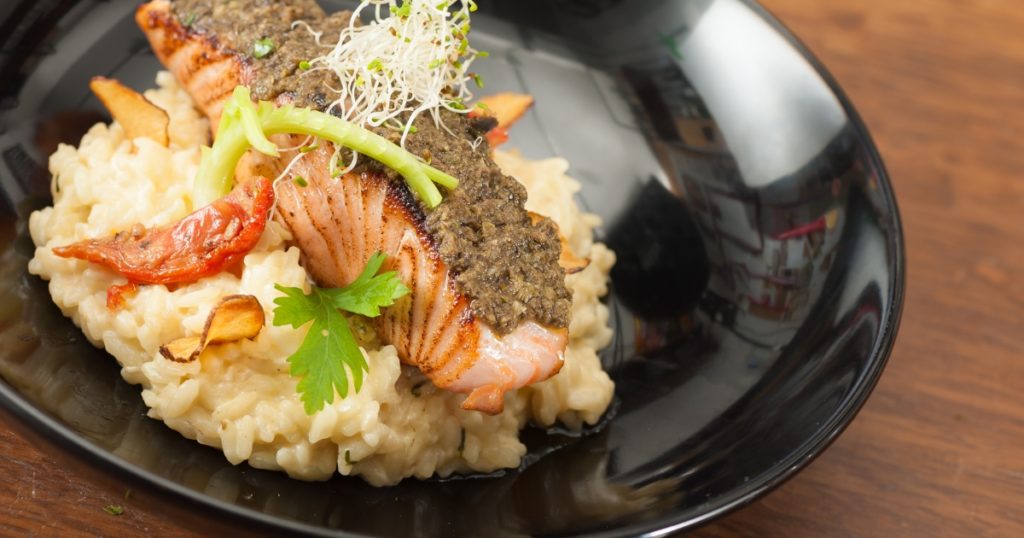
Global fusion cuisine combines elements from various international cuisines to create innovative and unique dishes, merging flavors, ingredients, and techniques from different cultures. This trend is popular because it allows for culinary exploration and reflects a growing appreciation for cultural diversity. It makes cooking more adventurous and helps people experience global flavors at home.
If you enjoy creating new dishes, global fusion is for you. It can be a fun adventure for your taste buds and helps you learn about different food practices around the world. Here are some examples of global fusion meals that you can try:
- Sushi burrito: Combine the flavors of Japanese sushi with the convenience of a Mexican burrito by wrapping sushi ingredients in a seaweed sheet and rice.
- Indian spiced burgers: Mix Indian spices like curry powder and garam masala into ground beef or chickpeas for a unique twist on traditional burgers
- Kimchi tacos: Fill tortillas with Korean kimchi, marinated beef or pork, and a hot sauce for a delicious fusion of Korean and Mexican flavors.
Oh and before we forget, Chef Him Uy De Baron, one of the instructors here at The Bailiwick Academy, has plenty of experience with global fusion. Check out his classes here to get a taste!
Top Food Trends in 2024 # 4: Zero-Waste Gastronomy

Zero-waste gastronomy is becoming a major trend in 2024 in the food and beverage industry, reflecting a growing commitment to sustainability and environmental responsibility in the culinary world. This approach is all about using every part of your ingredients to make sure nothing goes to waste.
Chefs and home cooks alike are embracing zero-waste techniques, from making stocks with vegetable scraps to creating flavorful dishes from overlooked parts of produce and proteins. This reduces waste and encourages innovation in the kitchen, leading to unique and resourceful recipes.
Want to get in on the trend? Here are some you can try:
- Vegetable scrap broth: Save your vegetable peels, stems, and ends to make a flavorful broth for soups and stews.
- Fruit peel jams: Turn your fruit peels and scraps into delicious homemade spreads, jams, and marmalades.
- Herb stems pesto: Use stems from herbs like parsley, cilantro, and basil to make a unique and flavorful pesto.
By adopting zero-waste gastronomy, you’re helping the planet and discovering new flavors and techniques to elevate your cooking. It’s a win-win for both your kitchen and the environment.
Top Food Trends in 2024 # 5: Culinary Storytelling
Culinary storytelling is another of the top food trends for 2024. No, this doesn’t necessarily involve food writers. Rather, it’s about chefs and restaurants using food and beverages to tell stories and connect with diners. This trend focuses on narratives, such as the origins of a recipe, ingredient sourcing, or the chef’s inspiration.
Diners are increasingly interested in the cultural context and personal touches that make each dish unique, which is why culinary storytelling is trending in the first place. This approach not only enhances their dining experience but also builds a stronger connection with the restaurant.
You don’t have to be a restaurant to embrace this trend, though. Even at home, you can share the stories behind your meals to create a more engaging and meaningful dining experience for your family.
Here are some approaches you can try:
- Family recipe night: Cook a meal using recipes that have been passed down through your family. Share the stories and memories that go along with each dish.
- Personal milestones: Prepare a dish that celebrates a significant moment in your life, like a birthday, anniversary, or other milestone. Share the emotions and memories associated with it.
- Travel-inspired dishes: Make a dish inspired by a place you’ve visited or dream of visiting. Share the story of why that place is special to you.
What is the next big food trend?
Here’s the thing about trends: food trends in 2024, for sure, will not be the same as food trends in 2025. It takes a lot of consumer insight to determine what they will be.
If you’re not looking to get into the food business, that’s okay! You can still try out these trends at home and enjoy experimenting and serving new things to your family.
But what if you do want to start a food business? Simply hopping on the biggest trends might work initially (like ube pandesal or burnt Basque cheesecake), but to ensure long-term success, you need something more sustainable.
Well, you don’t have to look too far; the answer is right here!
Join The Bailiwick Academy’s Food Business Bootcamp!
The TBA Food Business Bootcamp is a 14-week program that will give you the right foundation to build and sustain a successful food business.
Here are the modules you’ll get when you enroll:
- Entrepreneurial Mindset
- Soul Branding
- Branding 101
- Business Basics
- Menu Planning
- Human Resources
- Marketing and Sales
- Accounting
- Food Costing
- Legal Fundamentals
- Employment Law
- Business Planning
Plus, you get three bonus classes:
- Excel Basics for Food Business Owners
- Meat Processing Classes
- Mobile Food Photography
At the end of this, you’ll learn how to have a business that’s low-risk, low-maintenance, and high return of investment…
Even without necessarily paying attention to food trends in recent months.
So what are you waiting for?
Go to this page to learn more about the Food Business Bootcamp!
Oh, and of course, for you to officially join, sign up at The Bailiwick Academy. That way, you’ll get access to plenty of classes, too!
See you inside the boot camp or inside one of the TBA classes!
—
Keep coming back to The Bailiwick Academy blog for more kitchen tips, tricks, and much more!
]]>To help you out, we’ve put together a list of vegetables that are keto-friendly and those you should avoid. Let’s get to it, shall we?
What is the keto diet?
Here’s a quick reminder of what the keto diet is: it’s a popular weight-loss strategy that requires dieters to cut their carbohydrate or carb intake to no more than 50 grams per day. You do this so you get into a state of ketosis, a state where you will start burning fat for fuel. As a result of going low carb, you lose weight!
However, that’s not the only thing keto can do for you. Some research shows that keto can improve your heart health, lower your bad cholesterol level, and reduce your risk of developing heart disease. Going on keto diets is also a great way to help treat age-related neurological decline such as Alzheimer’s disease.
There are even ongoing studies that say keto can prevent and treat cancer. It is hypothesized that cancer cells feed off carbs and blood sugar to grow and multiply, and by lowering your carb intake, you’re starving cancer cells’ fuel, which may cause them to decrease in size and die.
Of course, while a low-carb diet seems to carry plenty of health benefits, please don’t take any of the information we put here as strict medical advice. For additional information, it is best to consult with a registered dietician or a doctor.
On to the main topic. The big question: can you eat vegetables on the keto diet?
The answer is yes. However, in our quest for healthy eating, we might automatically assume that since vegetables are green, natural, and aren’t sweet, all are okay to eat on the keto diet. But that’s not the case—and you’ll find out why in the next section.
Vegetables To Limit On The Keto Diet
Starting a keto diet means watching your carbs, and that includes the veggies you eat. Not all vegetables are low in carbs, so it’s important to know which ones to limit.
What vegetables are bad for the keto diet (or at least, not recommended)? Read on.
Carrots
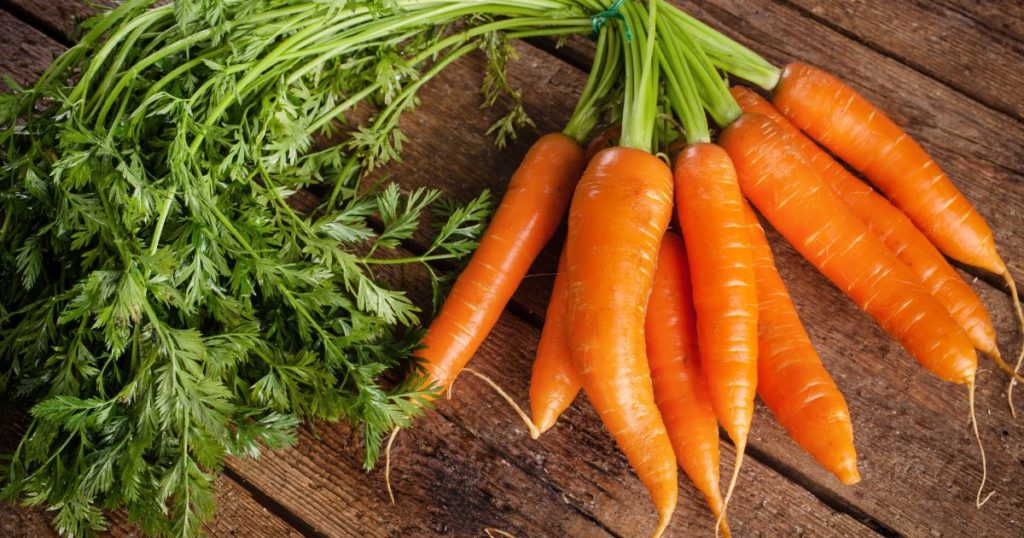
Carrot cakes (like the one in Chef Joey Prats’ class) are definitely not allowed, unless it’s a keto carrot cake like the one in Ms. Chiqui Ortiz-Dingcong’s class. But what about carrots themselves?
Well, bad news: carrots have more carbs than some other vegetables, with about 9 grams of carbs in each serving. If you’re on a keto diet and trying to keep your daily carbs under 50 grams, you’ll need to be careful about how many carrots you eat. It’s best to eat them in small amounts to stay within your carb limit.
Sweet Potato
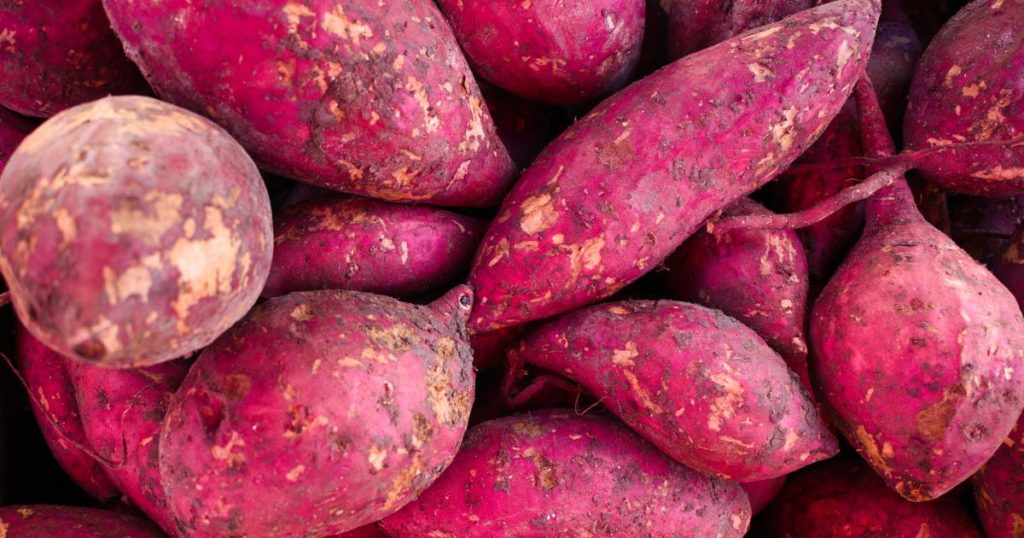
Sweet potatoes, including those turned into your favorite side dish like fries, are naturally high in carbohydrates. This (as well as other starchy vegetables) can pose a challenge for those on a keto diet, aiming for very low daily carb intake. Because of their carb content, sweet potatoes can make it harder to stay within the limits needed to maintain ketosis.
Legumes
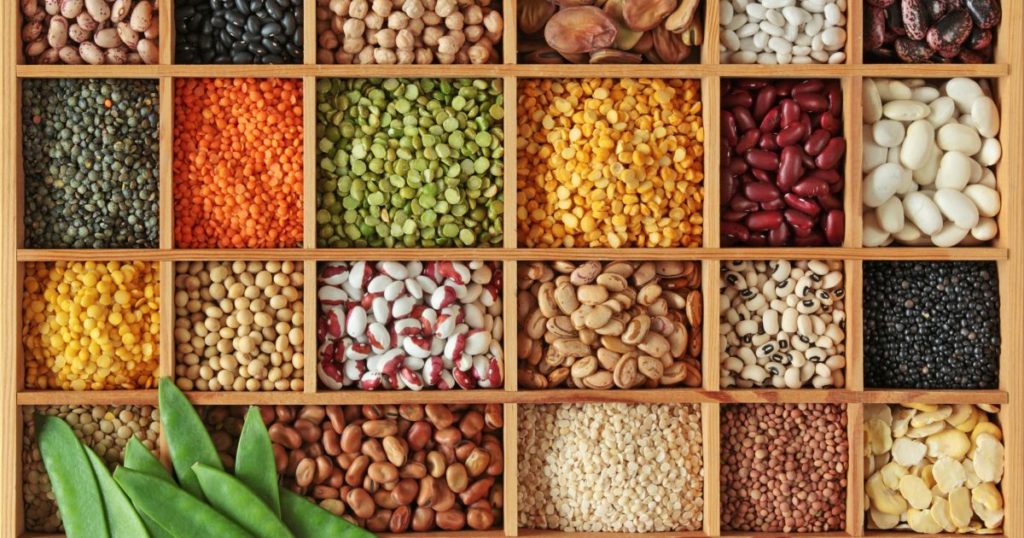
Legumes, including soybeans, peanuts, and lentils, are a popular protein source for vegans. However, these vegetables contain high carb content. This makes it difficult to stay within the low-carb limits required to maintain ketosis and achieve the full benefits of a keto diet.
Peas
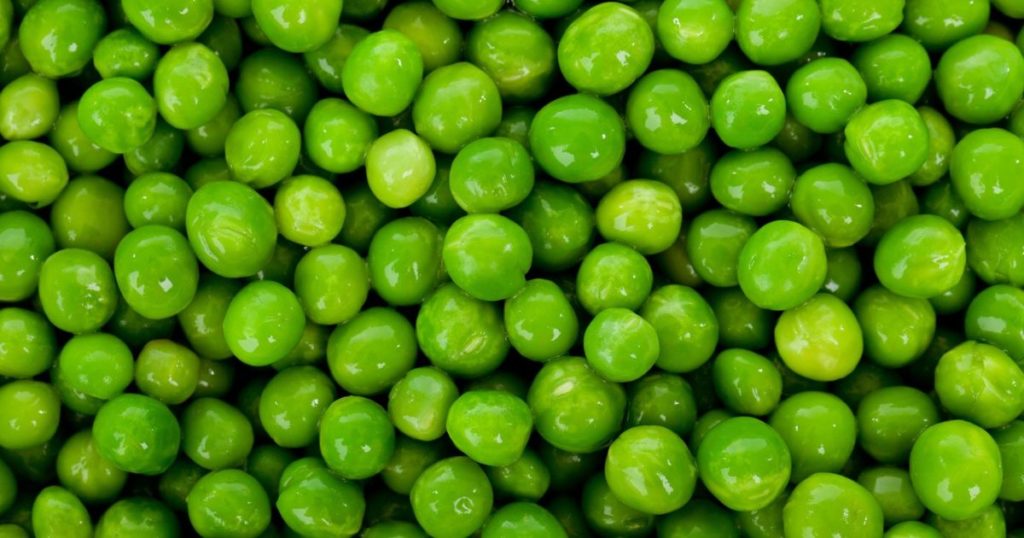
Don’t be misled by their small size—peas are high in starch, which means they’re also high in carbohydrates. Eating peas in large amounts can disrupt your meal planning and make it harder to stay within your daily carb limit. In short, it’s best to limit your intake of peas.
Onion
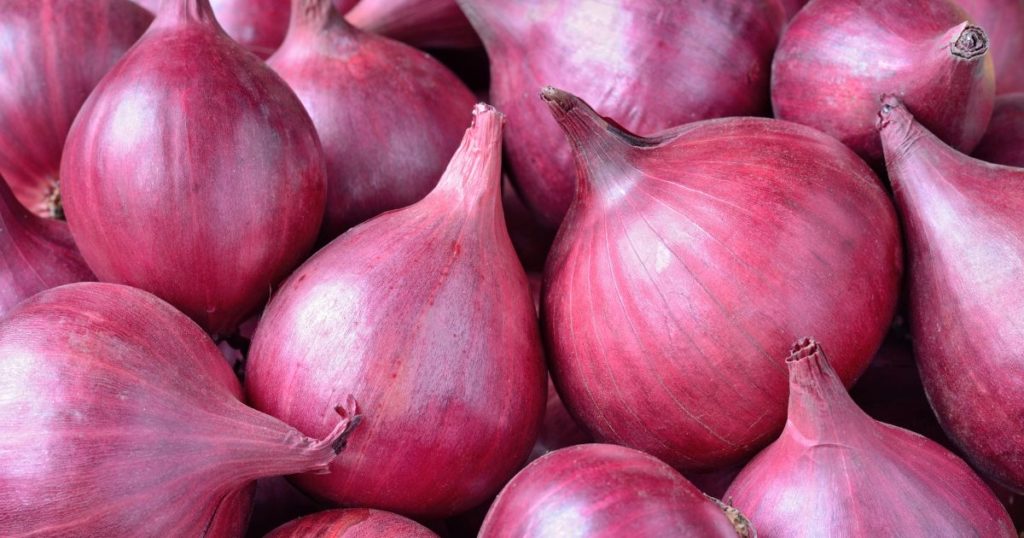
Don’t get us wrong: we at The Bailiwick Academy love onions. We even have a course all about onions! However, if you’re following a ketogenic diet, it’s important to use onions sparingly. Despite their delicious flavor and many uses, onions contain carbs that can add up quickly, making it necessary to moderate their use to stay within keto’s strict carb count.
Corn
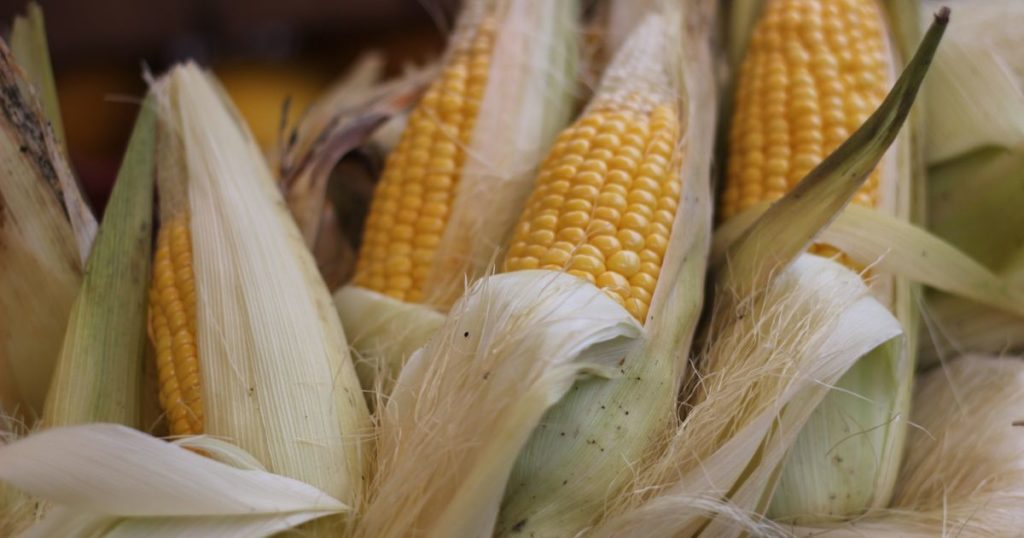
Corn is another food that might be tempting due to its sweet taste, but it’s not suitable for a ketogenic diet. It’s another vegetable high in carbohydrates, which can interfere with your efforts to maintain ketosis and achieve your weight and health goals. If you’re serious about sticking to keto, it’s best to limit or completely avoid corn.
Yam
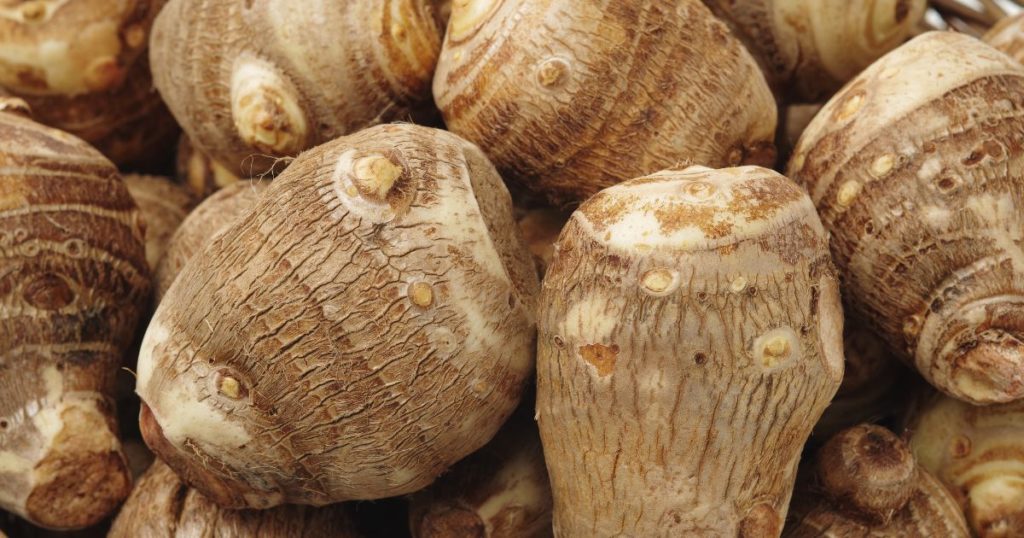
Yam is a root vegetable that packs a hefty carb count, ranging from 22 to 42 grams per serving. This is even higher than what you find in sweet potatoes. In other words, you’re not going to see yam in any type of keto meal plan.
Best Vegetables For The Keto Diet
This section is going to make you happy because it will show you which veggies are best for staying low in carbs but still getting plenty of nutrients.
Spinach
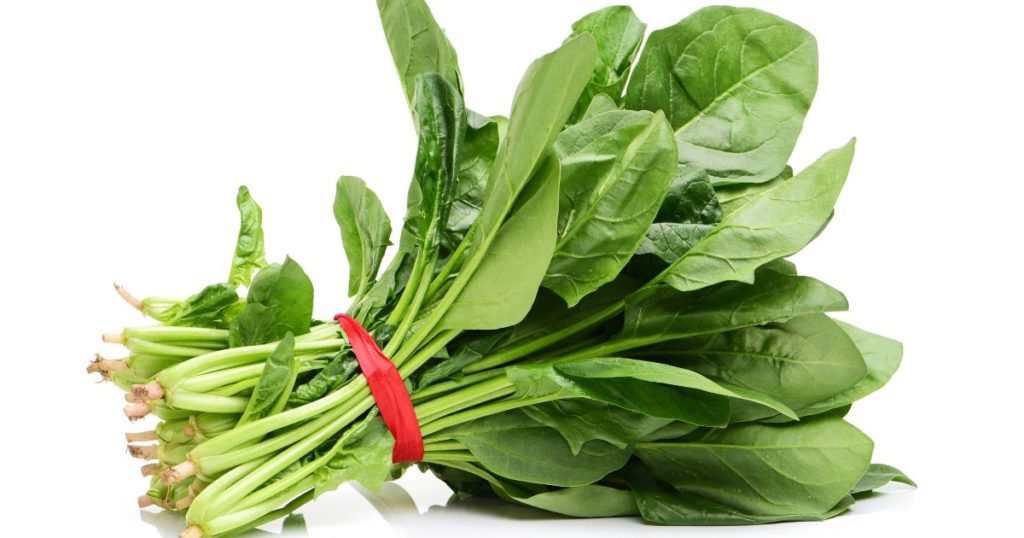
Spinach is a powerhouse of nutrients, rich in vitamins A and C, potassium, folic acid, iron, and calcium. Incorporating spinach into your diet can offer health benefits such as cancer prevention and reduced blood pressure. It’s not only beneficial for your overall well-being but also fits perfectly into a keto diet due to its low-carb content.
Bok Choy
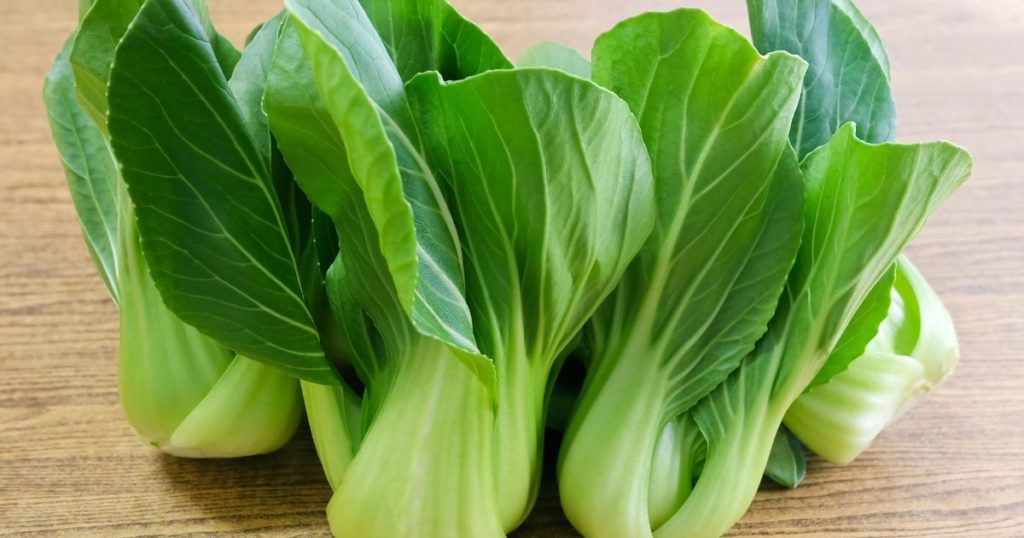
Bok choy is loaded with compounds that can help fight cancer, including vitamins C and E, beta-carotene, folate, and selenium. These nutrients not only contribute to its powerful antioxidant properties but also make bok choy a valuable addition to a keto diet, offering health benefits without adding many carbs.
Kale
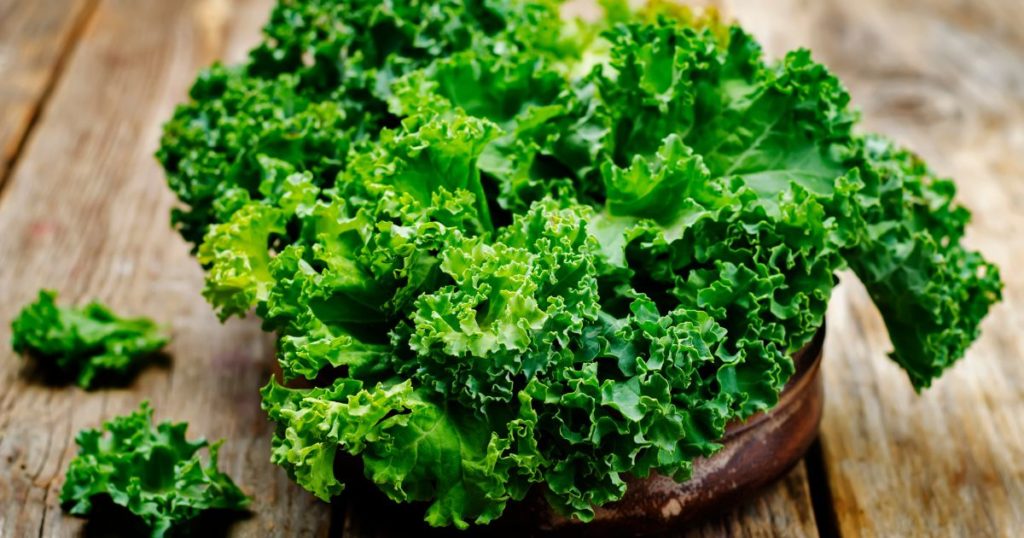
Kale is a nutrient-dense leafy green that’s low in carbs and high in beneficial nutrients. It’s packed with fiber, vitamins, minerals, and antioxidants that help prevent or slow cell damage. Regularly eating kale can lower your risk of type 2 diabetes, protect against heart disease, and promote healthier bones, skin, and hair. It’s an excellent vegetable for anyone on a keto diet, contributing to overall health without compromising carb limits.
Broccoli
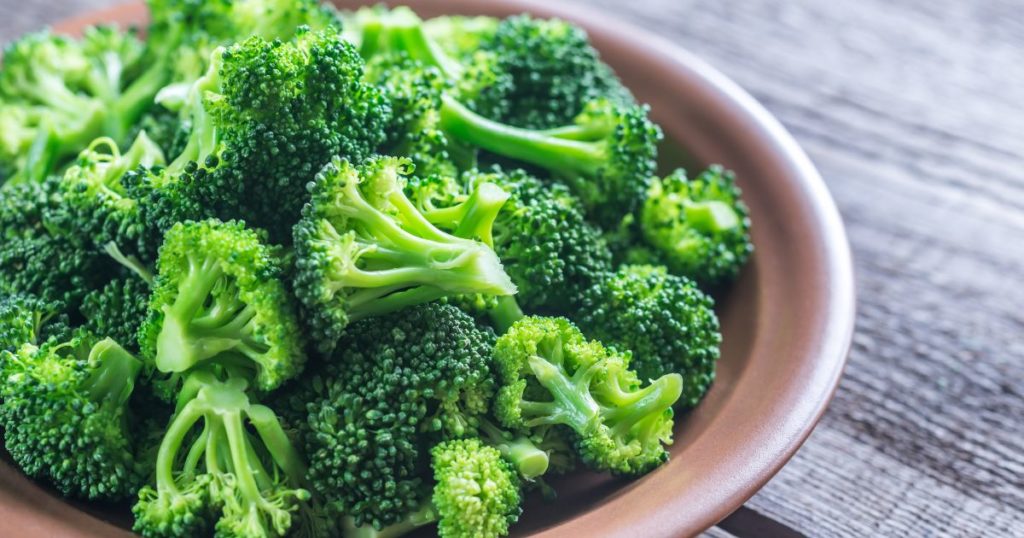
Broccoli is a versatile vegetable that can be enjoyed in various forms—raw, blanched, steamed, or roasted. It fits well in salads, side dishes, soups, pastas, and even as a rice substitute. Beyond its plenty of uses, broccoli is also a rich source of calcium, which is crucial for maintaining strong bones and preventing osteoporosis. This makes it a valuable addition to the keto diet, offering versatility and essential nutrients.
Cauliflower
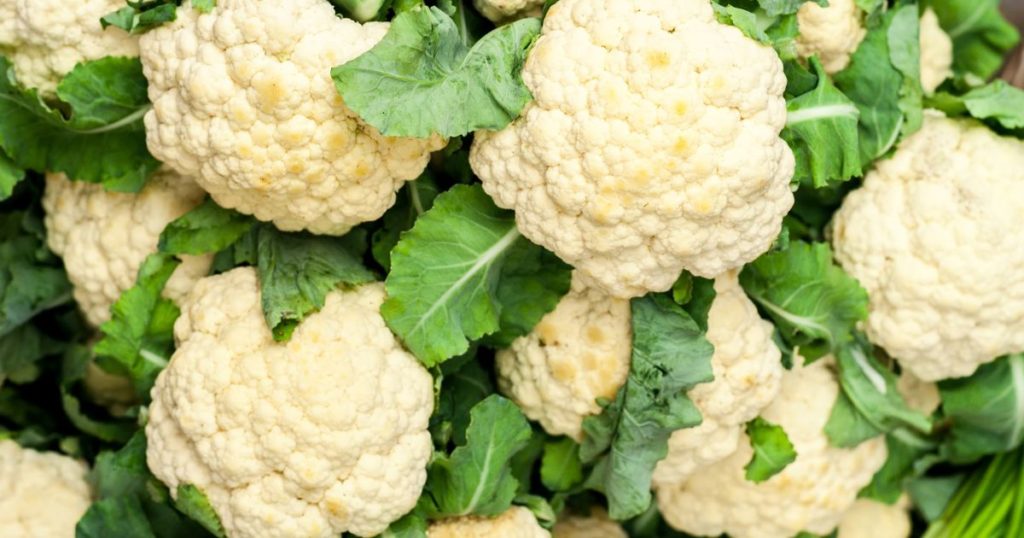
Cauliflower is a superfood that offers significant health benefits, including cancer prevention and improvements to gut and heart health. Its versatility is similar to broccoli, allowing it to be used as a rice substitute (yes, cauliflower rice is a thing!) or incorporated into various dishes. This makes cauliflower another excellent choice for those on a keto diet.
Asparagus
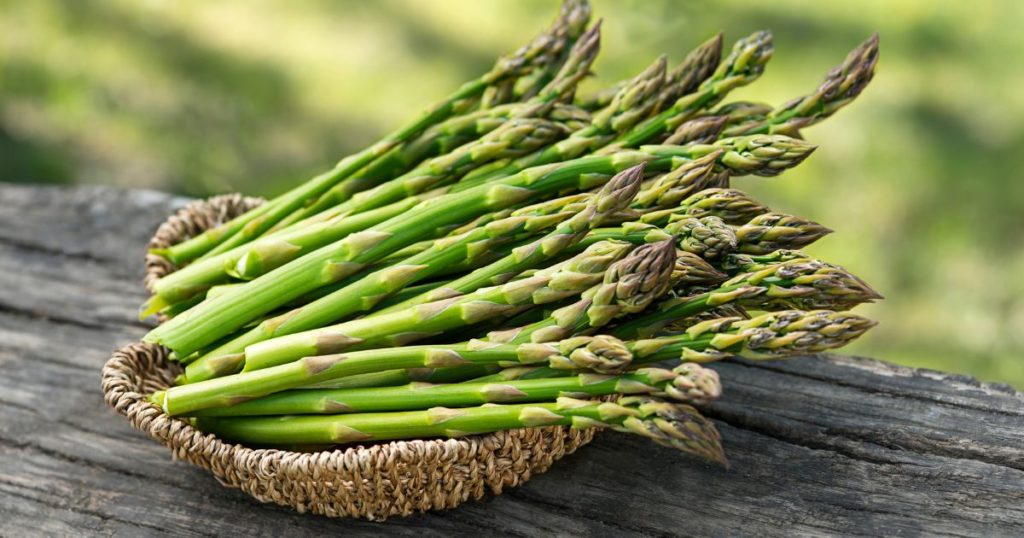
Asparagus might be known for its peculiar effect on the smell of urine, but its benefits far outweigh this minor quirk. It’s excellent for weight loss, helps prevent urinary tract infections, and can even boost your mood. And like all the others on this list, asparagus is a great choice for those on a keto diet.
Zucchini
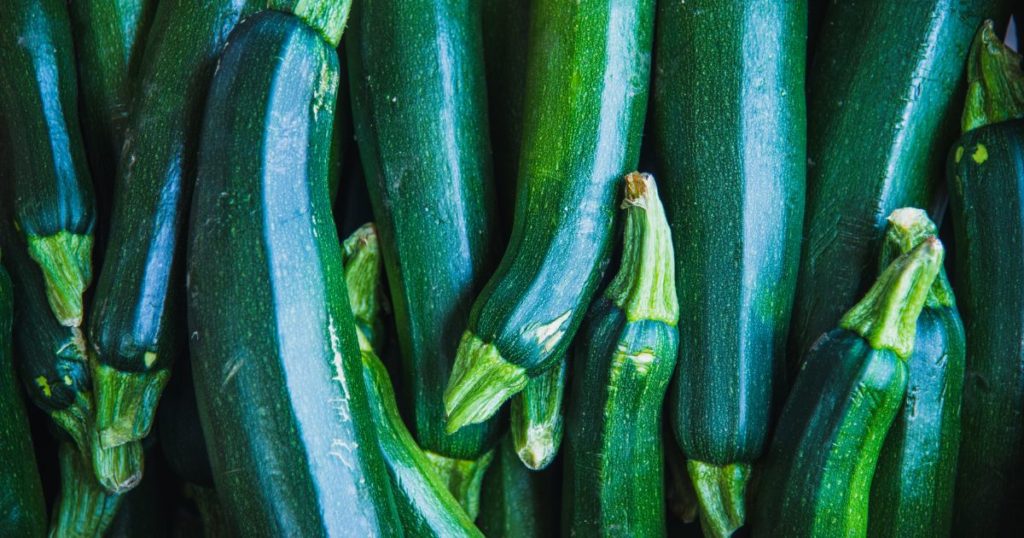
How To Ensure The Vegetables You Eat Are Keto-Diet Approved
Now you know what vegetables to eat and avoid while you’re on a keto diet. The next problem is this: what about vegetables that aren’t on this list? How can you find out which ones are, and which ones aren’t?
For instance, what if you’re eating outside? How can you make sure that what you’re eating is keto?
Well, if you really want to stick to a keto diet, it’s best that you be the one to prepare your food.
And if you want to add veggies to the usual keto food like meats, here’s a better way of preparing them: through the Keto Salad and Wraps class by Ms. Chiqui Ortiz-Dingcong!
If you’re health-conscious or eager to dive into the culinary world as an entrepreneur, this course is designed to introduce you to a range of mouthwatering, healthy dishes. Enroll now and master the art of preparing:
- Keto Tortilla
- Keto Mediterranean Salad with Chicken Souvlaki and Wrap
- Keto Mexican Salad with Beef Strips and Wrap
- Keto South Asian Prawn Salad and Wrap
And don’t worry; like all the courses at The Bailiwick Academy, this course is structured to be straightforward and accessible, making it ideal even for beginners. You’ll not only learn the basics of creating Keto Salads and Wraps but also acquire advanced culinary skills that will elevate your cooking.
Plus, this course will ensure that eating vegetables will never, ever be boring!
So what are you waiting for? Sign up now at The Bailiwick Academy! See you inside!
]]>Well, it’s a type of cuisine that’s not only delicious but also good for your health. Here in the Philippines, we often think of yummy food as being oily and greasy, but Mediterranean food is different—it’s healthier.
Curious? Keep on reading as we show you how a Mediterranean diet can change the way you think about tasty foods. Whether you’re looking to eat healthier, want to cook nutritious meals for your family, or just discover more delicious food, exploring Mediterranean food is exciting and fun!
Let’s get to it, shall we?
So… what is Mediterranean-style food, exactly?
You might be Googling right now, going, “What classifies as Mediterranean food?” Well, Mediterranean cuisine or cuisines are quite unique compared to well-known types like American, Japanese, or Chinese. It’s not tied to a specific ethnic group but is a collection of culinary practices from people around the Mediterranean Sea, including countries like Spain, France, Italy, Greece, Turkey, as well as regions in the Middle East and North Africa.
What sets Mediterranean food apart is its use of fresh ingredients and unique flavors. The diet mainly focuses on plant-based foods such as fresh vegetables, fruits, whole grains, legumes, and nuts. Olive oil is essential, serving as the main source of fat.
Additionally, fish and seafood play a big role, while red meat and dairy are less common but are still included. Herbs and spices are key for adding flavor, and there’s often a moderate consumption of wine, either red wines or white ones.
Origins of Mediterranean cuisine
The origins of Mediterranean cuisine are deeply rooted in the history of the various cultures that have lived around the Mediterranean Sea. These include ancient civilizations like the Egyptians, the above-mentioned Greeks, and Romans, who left their mark on the region’s food culture. The Mediterranean’s role as a major trading hub was crucial, as it connected Asia, Europe, and Africa, allowing for the exchange of spices and other ingredients that enriched local diets.
Significant influences also came from the Moors in Spain, who introduced ingredients such as rice, sugar, and almonds (and, totally unrelated but fun fact, also influenced arroz con pollo). Furthermore, the discovery of the Americas brought about new Mediterranean foods, including tomatoes, potatoes, and peppers, which added vibrant flavors and colors to the cuisine.
As these different cultures interacted and traded, they blended their culinary practices, creating a diverse and rich culinary tradition that spans the Mediterranean region, reflecting its historical connections and the natural bounty of its climate.
Common Elements of Mediterranean Cuisine
Now, you might be thinking that all these Mediterranean countries are different from one another, and it’s hard to memorize which country cooks what. So, to clear things up, let’s talk about the key ingredients that run through Mediterranean cuisine. Here’s what they generally share, no matter where they are in the Mediterranean region:
- Fresh, Whole Foods: Vibrant plant-based ingredients like vegetables, fruits, whole grains, nuts, and seeds dominate the menu.
- Olive Oil: This heart-healthy oil is a staple. Dishes will either be cooked in olive oil or have an olive oil drizzle.
- Herbs and Spices: The use of fresh and dried herbs like mint, basil, and thyme, along with spices such as cumin and saffron, adds depth and flavor to every meal.
- Nuts: Snack on them, toss them into salads or use them in desserts. Nuts like almonds and pistachios are everywhere.
- Whole Grains: Staples like couscous, quinoa, and bulgur wheat are common and provide a filling base for many dishes.
- Tomatoes: A key ingredient in sauces, stews, and fresh salads, tomatoes are a fundamental part of Mediterranean recipes.
- Legumes: Chickpeas, lentils, and various types of beans are crucial for adding texture and protein to meals.
- Meat and Seafood: Meats are usually grilled and seafood is abundant, reflecting the coastal lifestyle of many Mediterranean regions.
- Desserts: Sweet treats often incorporate fruits, honey, and nuts, sticking to natural sources of sweetness.
Why is Mediterranean food popular?
A simple reason why Mediterranean food is so popular is that the foods to eat here masterfully combine rich flavors, varied textures, and fresh ingredients in a way that’s deeply satisfying. It’s also easy to prepare: just toss the ingredients together, add a splash of olive oil, sprinkle some herbs and spices, and your meal is ready. It’s perfect for busy people looking for quick yet nutritious meals.
Mediterranean cuisine isn’t just tasty—it’s also good for your health. Benefits of the Mediterranean diet include lower and healthy blood sugar levels, reduced risk of heart or cardiovascular disease and Alzheimer’s, better weight loss, and improved cognitive function. In other words, the Mediterranean diet is delicious AND nutritious!
Examples of Mediterranean-style Food
Curious about what kinds of foods make up a Mediterranean diet? Check these out:
Baba Ganoush

Baba Ganoush is a creamy, smoky eggplant dip that’s a favorite in Mediterranean and Middle Eastern cuisine. It’s made by blending roasted eggplant with tahini, garlic, lemon juice, and spices. This appetizer is loved for its simple yet rich flavors and health benefits—it’s low in carbs, vegetarian, and gluten-free.
Enjoy it with veggies or pita chips, or spread it on sandwiches and wraps for a delicious taste of Mediterranean goodness.
Fun trivia: Baba Ganoush means “spoiled dad”. Who wouldn’t feel spoiled after eating this creamy, savory, and addicting dish?
Lentil Soup

Lentil soup is a hearty and nutritious choice popular in vegetarian diets. Made from lentils, which come in colors like green, brown, and red, this soup is rich in protein and fiber. The soup includes vegetables and spices like onions, carrots, garlic, and cumin, offering a comforting and flavorful meal. It’s perfect on its own or served with a slice of crusty bread.
Cucumber and Tomato Salad

Cucumber and Tomato Salad is a staple in Mediterranean cuisine, known for its simplicity and freshness. It’s mainly made with cucumbers and tomatoes, often tossed with onions, parsley, and sometimes red peppers. For an extra touch, you can add some feta cheese.
Dress up the salad with a drizzle of olive oil, a splash of vinegar, and a squeeze of lemon juice. This light and healthy salad is perfect as a side or as a complement to other dishes.
Baklava

Baklava is a beloved dessert from the Mediterranean and Middle East, made with layers of thin filo pastry, filled with chopped nuts, and sweetened with syrup or honey. It’s popular in countries like Greece, Turkey, and Lebanon. The dessert varies regionally; some versions use walnuts, almonds, or pistachios, and may include spices like cinnamon or flavorings like rose water.
To make baklava, layers of phyllo dough are brushed with butter, filled with nuts, and baked until golden. After baking, a sweet syrup is poured over to soak into the layers. Baklava gets even tastier after a day, making it perfect to pair with black tea. This treat is not only delicious but also steeped in a rich history.
Here’s another fun fact: there’s so much debate about where Baklava came from. Greece and Turkey both claim it came from them, but one thing’s for sure: no one can contest that it’s one of the best desserts the Mediterranean cuisine produced.
Pita Bread
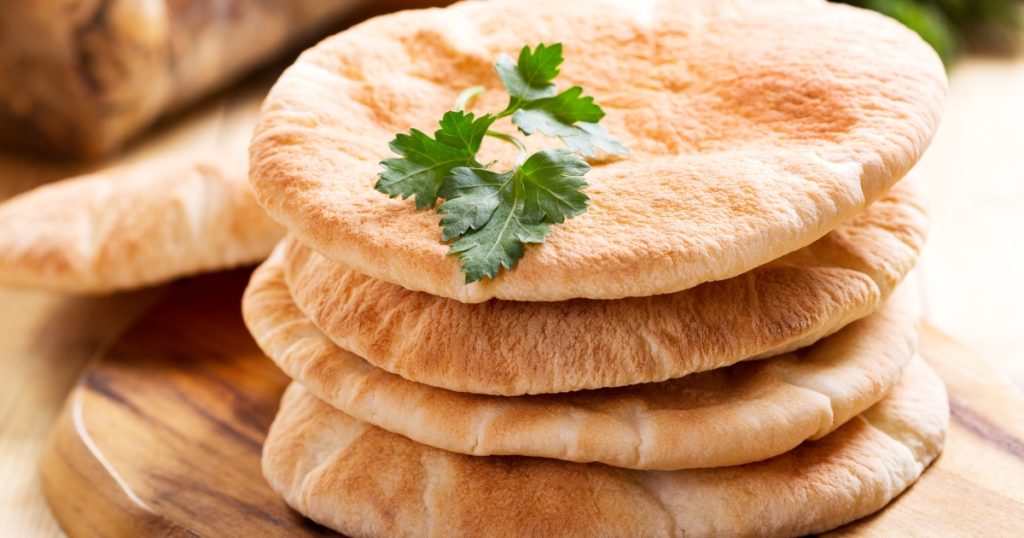
Your Mediterranean food experience will not be complete without Pita bread. This flatbread is made from a simple dough consisting of wheat flour, yeast, water, and salt. After mixing, kneading, and allowing it to rise, the dough is shaped into small balls, rolled out into thin circles, and baked at a high temperature. This process causes the bread to puff up, creating a pocket in the middle.
Pita is perfect for stuffing with fillings like falafel or vegetables and is commonly used for sandwiches and wraps. It also pairs wonderfully with dips such as hummus and baba ganoush. Whether used as a wrap or served plain as a side to various dishes, pita bread completes any Mediterranean meal.
Want to experience our class that involves pita bread? Check out Chef Max Nadin’s Pocket Bread class.
Shakshuka
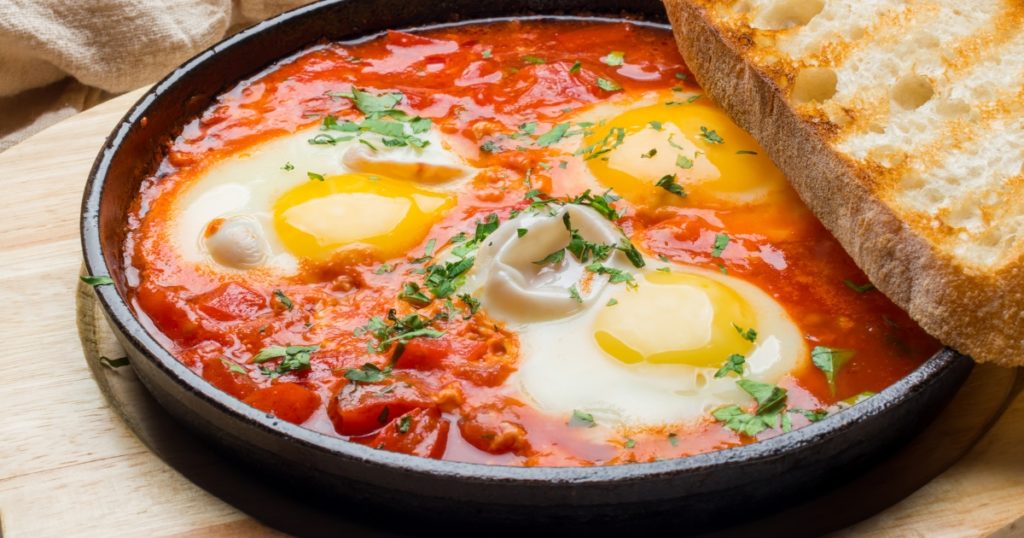
Shakshuka is a vibrant one-pot dish beloved in Mediterranean cuisine, known for its poached eggs simmered in a spicy tomato sauce with onions, bell peppers, and garlic. Originating from Tunisia, where it’s called “a mixture” or “shaken,” this dish packs a punch of flavor with its fresh herbs and a drizzle of extra virgin olive oil.
It’s a versatile meal that can be enjoyed for breakfast, brunch, lunch, or dinner and is often served with bread like pita or challah for dipping into the rich, flavorful sauce. Simple to make yet rich in taste, Shakshuka proves that nutritious and delicious can indeed coexist beautifully in a single dish. Whether you stick with the classic recipe or add your own twist with different spices or vegetables, it’s a satisfying meal that’s sure to impress.
Labneh
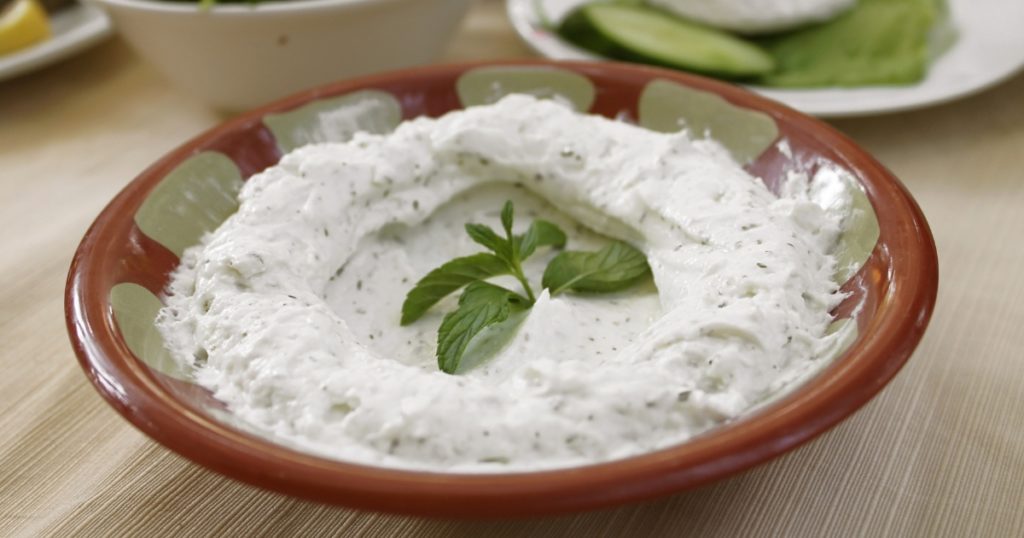
Labneh is a thick and creamy Middle Eastern yogurt dip, made simply by mixing yogurt with a little salt and straining out the whey. Often called labneh cheese due to its thick, spreadable texture, it has a tangy, rich flavor that pairs wonderfully with warm pita bread or pita chips, often drizzled with extra virgin olive oil.
You can also use labneh as a sandwich filler, or as a tasty topping on flatbreads like manaqeesh. It’s a common breakfast or snack item in Middle Eastern cuisine and can be customized with different levels of salt or marinated in oil and herbs for an extra flavor boost. Whether you call it labaneh, labne, or lebnah, it’s a versatile and delicious addition to any meal.
Want to make Mediterranean-style food at home?
Ready to try making Mediterranean-style food at home? It’s easier than you might think! That’s especially since here at The Bailiwick Academy, you can learn Mediterranean-style food recipes with Sir Rodney Martinez latest cooking class: Mediterranean Medley!
Enroll and you’ll no longer be wondering “What is a Mediterranean food menu made of,” because you’ll learn to make the following Mediterranean dishes:
- Baba Ganoush
- Labneh
- Shawarma Pita
- Hummus
- Shawarma Rice
- Falafel with Tzatziki
Just like all the the classes at The Bailiwick Academy, it’s an easy-to-follow class, perfect even if you’re a beginner. You’ll not only learn the basics of Mediterranean cuisine but also gain skills that go beyond the basics—once you’re done, you might be on your way to starting a Mediterranean food business!
So what are you waiting for? Sign up at The Bailiwick Academy and start your journey to mastering the art of Mediterranean cooking, exploring vibrant flavors and healthy recipes right from your own kitchen.
—
Keep coming back to The Bailiwick Academy blog for more cooking and baking tips, kitchen tricks, and much more!
]]>Keep on reading. I’m going to talk about three things you can do to win in business—ones that The Bailiwick Academy can help you with!
How to Succeed in Your Business in 2024: Increasing Brand Visibility By Partnering With Others
Let’s face reality: nowadays, your target market’s attention span is getting shorter these days. That’s because of bombardment from different brands via social media posts and videos. Getting them to consider you instead of your competition is getting to be difficult.
Here’s a powerful strategy to cut through the noise: increasing your brand’s visibility through strategic partnerships. Why and how?
- Boosted Recognition: Partnering with others can place your brand in new and broader contexts, making it easier for customers to recognize and remember you. This visibility is crucial for fostering trust and loyalty.
- Competitive Edge: When your brand is seen alongside respected partners, it elevates your status and sets you apart from competitors. Customers are more likely to choose you when they see your brand frequently and in good company.
- Enhanced Brand Value: Collaborations not only increase recognition but also build brand equity. As your brand becomes more familiar and trusted through these partnerships, its overall market value and sustainability grow.
These three reasons are more than enough, don’t you agree? And if you’re looking for a brand to partner with, especially if your brand is related to the culinary arts, there’s no better choice than us at The Bailiwick Academy.
Why Partnering With The Bailiwick Academy Is A Good Choice
Our roster of instructors here at The Bailiwick Academy is composed of some of the best cooking and baking instructors here in the Philippines. With them, we have created life-changing and on-demand classes that have changed the lives of many Filipinas for the better—check out these success stories. That’s because our classes have given them the confidence to turn their passion for creating delicious food into profit.
Our culinary platform is not just about food, it’s about a lifestyle centered around creativity, passion, and enjoyment.
You can be part of this vision and help us create life-changing moments with our students.
And when you’ve partnered with us, your products are shown and used by our top-rated chefs and instructors. What kind of message do you think it’s sending?
- You’re a high-quality brand endorsed by our instructors.
- You’re trustworthy.
- “I remember you; that’s why I’ll buy your products.”
In addition to that, you’ll also get these exclusive deals:
- Boosted Visibility: Expose your brand to our audience and foster brand recognition and purchase.
- Engagement Opportunities: Actively engage with our audience and promote stronger connection and brand recall.
- Authentic Storytelling: Become an essential part of our student’s lives. Cultivate trust and loyalty among them and turn them into your brand advocates.
- Content Integration: Your products will be seamlessly fused into our face-to-face and online baking & cooking classes.
- Gifting and Rewards Programs: Position your brand as a thoughtful and rewarding choice.
We’re already trusted by brands like Penco and Buji.ph. Joining forces with us opens the door to a community of success, where your brand can shine brighter and reach further. Let’s create a future where our collaboration is your next big win.
Reach out to us at [email protected] to get started.
How to Succeed in Your Business in 2024: Make Employees Happy
The fast-paced nature of corporate life coupled with tight deadlines and high expectations can create a stressful environment. This can lead to significant effects on your business such as decreased productivity, a rise in absenteeism, high turnover rates, poor morale, and poor customer relationships.
But if you really want your business to succeed, you should help your employees manage stress and improve business productivity. After all, employees are the backbone of any business.
We can help you with that, with our baking and cooking classes!
Why Baking And Cooking Classes
You might be wondering why you should consider cooking and baking classes to help your employees. Well, they’re actually already proven to enhance efficiency and alleviate stress.
These classes are creative and therapeutic in nature, fostering mindfulness and a sense of achievement.
Additionally, you’ll get these benefits:
- A Closer Team: Participating in cooking or baking classes as a team fosters collaboration and teamwork. Employees learn to communicate, delegate tasks, and work together towards a common goal, which can strengthen interpersonal relationships in the workplace.
- More Creative and Innovative Workers: Cooking is an art, and baking often involves precise measurements. Both activities encourage creativity and innovation, skills that can be transferred to problem-solving and ideation in the workplace.
- Time Management Skills: Many recipes have specific timelines, requiring participants to manage their time effectively. This skill is transferable to the workplace, helping employees prioritize tasks and meet deadlines efficiently.
- Work-Life Balance: Cooking and baking classes provide a balance between work-related activities and personal interests. Encouraging employees to pursue hobbies outside work can contribute to a healthier work-life balance.
And when you partner with us with these activities, you’ll also receive:
- 20% discount on 200+ on-demand online classes.
- Exclusive pricing for your team on upcoming face-to-face monthly baking and cooking classes with top-rated chefs.
- Tailor-fit baking and cooking classes designed for your teambuilding or company activities.
Contact us at [email protected] and we can get started planning on your next team building!
How to Succeed in Your Business in 2024: Extending Opportunities to Employees’ Families
Aside from taking care of your employees, it would also help if you took care of their families. Extending opportunities to employees’ families is not just an act of goodwill; it’s a strategic move that can significantly contribute to your business’s success. Here’s how embracing this approach can make a difference:
- Creating a work environment that acknowledges and supports employees’ family needs demonstrates a commitment to a work-life balance. This can lead to a more satisfied and motivated workforce, directly impacting productivity and loyalty.
- Companies that are family-friendly are often viewed more favorably by the public. This positive perception can boost your brand’s reputation, attracting not only potential employees but also customers who prefer to support businesses with strong social values.
- When employees feel their families are also valued by their employers, their loyalty to the company increases. This reduces turnover rates, saving costs related to hiring and training new staff.
Here are three things you can do to help out your workers’ loved ones:
- Adapt work schedules to accommodate the diverse needs of employees’ families. Offering remote work options allows more effective management of professional responsibilities and family life. This flexibility can significantly enhance job satisfaction and loyalty.
- Invest in the future of your employees’ families by providing scholarships or funding for educational programs. This not only aids in the personal development of their family members but also demonstrates a commitment to their long-term well-being and success.
- Develop programs or initiatives that offer part-time jobs, internships, or freelance projects to employees’ spouses or adult children. This approach not only helps in financially supporting your employees’ families but also enriches your company with diverse perspectives and skills.
Supporting Seafarers’ Families: A Partnership with The Bailiwick Academy
The sea life is tough, full of risks like accidents and piracy. When bad things happen, it’s not just the seafarers who suffer, but their families too. If your company is in the maritime industry and you want to do more for your employees’ families, especially when planning for the future or dealing with unexpected challenges, teaming up with The Bailiwick Academy is a great move.
You can help seafarer’s families get:
- Online Baking & Culinary Classes: Give seafarers’ families the chance to learn new skills or improve what they already know. This can open up new ways for them to earn a living.
- Entrepreneurial Empowerment: Help them learn how to start and run their own food businesses. This gives them a way to stand on their own and build a secure future.
- Tailored Curriculum for Success: Offer courses designed just for them, making sure they learn things that are truly helpful and relevant.
- Supportive Community: Encourage them to join a community where they can support and learn from each other, all aiming to succeed in the culinary world.
When you partner with us, not only will you be helping many families, you’ll also get:
- 20% Off Over 200 On-Demand Classes: A wide range of courses at a discounted price for continuous learning.
- Exclusive Rates for In-Person Classes: Special prices for your team on our monthly cooking classes led by top chefs, perfect for team bonding.
- Custom Classes for Company Events: Special cooking and baking classes designed for seafarers’ families, showing your company cares about their well-being.
If you’re interested in making a real difference in the lives of your employees’ families, let’s talk. Contact us at [email protected] and let’s see how we can work together to support seafarers’ families.
Final Thoughts
How to succeed in your business in 2024? It all comes down to three key actions: getting your brand noticed, supporting your employees, and offering opportunities to their families. These steps are crucial for building a strong, loyal team and a brand that stands out from the crowd. It’s about creating a supportive environment where everyone connected to your business can thrive.
Remember, if you’re looking to make these ideas a reality, reaching out to Bailiwick Academy is a great next step. We’re ready to partner with you to bring these benefits to life, helping your business, your team, and their families succeed together.
—
Keep coming back to The Bailiwick Academy blog for more cooking and baking tips, kitchen tricks, and much more!
]]>Whether you’re aiming to bake pizza yourself or simply love eating it, getting to know the various kinds is both fun and interesting. Let’s get started!
A Brief History of Pizza
What exactly is pizza? Well, pizza, like Torta Caprese, is from Italy. It is a round and flat, wheat-based dough topped with tomatoes, cheese, and other ingredients, and baked until the pizza crust is crispy and golden, and the cheese is bubbly and melted to perfection. But how exactly did it come to be?
According to Peatzeria, pizza evolved from flatbreads sold by street vendors in the late 18th century. The vendors topped with garlic, salt, herbs, lard, cheese, and other ingredients. They sold them primarily to low-paid workers seeking convenient and satisfying food.
Thankfully, in 1889 King Umberto I and Queen Margherita of Italy were impressed by a pizza topped with basil, mozzarella, and tomatoes, created by Raffaele Esposito to reflect the colors of the Italian flag. This pizza, known as the Margherita, gained royal approval. It also marked a significant moment in pizza history, making it go from street food to popular fare.
And in the 20th century, pizza gained popularity worldwide, especially in America. It became a favorite among Allied troops during World War II and later spread as Italians migrated to other countries and international travel became more common. This is also when different styles of pizza started popping up.
What are the different styles of pizza, exactly? Well, on to the main section of this article!
A Quick Disclaimer
This list doesn’t represent all different kinds of pizza. It’s just a taste of what we feel are some of the most popular and interesting kinds. We hope it gets you excited to try new pizzas and explore more on your own.
Here are some of the different kinds of pizzas you should make!
Different Kinds of Pizzas to Make 1: Margherita Pizza

Margherita pizza, a kind of tomato pizza, is one of the oldest flavors of pizza. It’s a classic Italian pizza composed of a thin crust topped with tomato sauce, fresh mozzarella cheese, basil leaves, a drizzle of olive oil, and a sprinkle of salt.
It’s simple, light, and possibly the purest form of pizza you’ll ever taste. Hey, it was approved by royalty, so it’s definitely good enough for all of us!
Different Kinds of Pizzas to Make 2: Pepperoni Pizza

Pepperoni pizza is one of the most popular pizzas in the United States—according to a 2017 Harris Poll, 36% of Americans prefer pepperoni on their pizza above all other toppings! It’s not hard to imagine why. The combination of a crispy crust, tangy tomato sauce, gooey mozzarella cheese, and the spicy kick of pepperoni slices creates a perfect balance of flavors and textures that many find irresistible.
The flavor appeal actually extends to the rest of the world. We’re sure you’d agree that pepperoni pizza is one of the most recognizable pizzas in the world.
Oh, and fun fact? Pepperoni pizza is not from Italy—this pizza is more of an Eastern European/American-Italian version.
Different Kinds of Pizzas to Make 3: Hawaiian Pizza

With all kinds of pizza toppings, how could anyone have thought of putting pineapple on pizza? Hawaiian pizza, which mixes sweet and savory tastes, is a bit of a debate starter. It usually has a thin crust with tomato sauce, mozzarella cheese, ham, and pineapple chunks.
Funny enough, the origin of this pizza is not from Hawaii—and there are conflicting origin stories. Some sources attribute the creation of Hawaiian pizza to Sam Panopoulos, a Greek immigrant in Canada. Supposedly, he added pineapple and ham or bacon to pizza at Satellite Restaurant in Chatham, Ontario in 1962.
Other evidence suggests that it was a pizzeria in Portland, Oregon where it all started. It was a store named Pizza Jungle that advertised a pizza with papaya, chopped green pepper, and pineapple as early as 1957, naming it the Hawaiian Pizza.
No matter the origin, this pizza is controversial. It’s popular with Americans, but we suggest never bringing this flavor up with Italians.
Different Kinds of Pizzas to Make 4: Neapolitan Pizza

A Neapolitan pizza takes the classic Margherita to the next level with extra sauce and cheese. This pizza comes from Naples, Italy, and is famous for its thin, tender crust. It’s usually covered with San Marzano tomatoes, fresh mozzarella, basil, salt, and a drizzle of extra-virgin olive oil.
This pizza is baked in a wood-fired oven at high heat. The result is a beautifully blistered crust and a deliciously smoky taste.
According to Pizza Bien, a pizza can only be considered a true Margherita if it meets four main criteria, as outlined by the Associazione Verace Pizza Napoletana:
- You may use only San Marzano tomatoes.
- You can use only fresh mozzarella. The mozzarella must be made from water buffalo milk or a mix of cow and water buffalo milk. This specific type of milk is chosen for the rich, creamy texture and taste it imparts to the cheese.
- The dough must be expertly prepared using only flour, yeast, salt, and occasionally sugar and beer.
- The pizza must be cooked in a wood-fired oven at approximately 900 degrees Fahrenheit. It is a process that takes just 60 to 90 seconds.
These strict guidelines ensure the preservation of the authentic Neapolitan pizza’s traditional essence.
Different Kinds of Pizzas to Make 5: Chicago Deep Dish Pizza

Out of the different types of deep dish pizza, Chicago Deep Dish pizza is one of the most well-known ones.
Originating in Chicago in 1943, It features a thick, buttery crust that lines a deep pan, creating a deep dish. The pizza is assembled with toppings such as Italian sausage, onion, peppers, and mushrooms, followed by a layer of fresh mozzarella cheese and chunky tomato sauce. Due to its thickness, Chicago deep pizza requires a longer baking time in the oven.
This style of pizza has become synonymous with Chicago and is celebrated for its hearty and indulgent nature. Oh, and this pizza’s indulgent nature and meaty flavors demand the use of a knife and fork for a better dining experience. We’d definitely call it one of the best dinner ideas (or lunch)!
Different Kinds of Pizzas to Make 6: California Pizza

California pizza is a style of pizza that originated in California, United States. It blends influences from New York and Italian thin-crust pizzas with toppings inspired by California cuisine. Adventurous eaters will love its creative pizza toppings such as barbecue sauce, bbq chicken, avocado, sun-dried tomatoes, and goat cheese. Some makers even add spinach, artichoke hearts, and peanut sauce.
It is often baked in a wood-fired oven or on a pizza stone. It can be served with either thin and crispy pizza crusts or thicker and chewier ones.
Different Kinds of Pizzas to Make 7: New York-Style Pizza

New York-style pizza is all about big, foldable slices with a thin, slightly chewy crust. Pizza makers toss it by hand and top it with tomato sauce and stretchy, low-moisture mozzarella. You can jazz it up with extras like pepperoni, mushrooms, or sausage. Baked in a gas oven, it gets a perfectly crispy yet bendy crust.
This pizza came to life when Italian immigrants hit New York City in the early 1900s. The dough’s made with high-gluten flour, a bit of sugar, olive oil, yeast, and water, giving it a unique taste and texture. The sauce? It’s a seasoned mix of tomatoes, garlic, and herbs, slathered over the crust before adding cheese and other toppings. And if you like, sprinkle on some garlic powder, red pepper, oregano, or Parmesan after baking.
Different Kinds of Pizzas to Make 8: Mushroom Pizza

Mushroom pizza is a classic choice for pizza lovers who are looking for vegetarian recipes. It’s simple: a thin or thick crust topped with tomato sauce, lots of mozzarella cheese, and heaps of mushrooms. Whether you like your mushrooms sautéed first or thrown on fresh, they add a juicy, earthy flavor to the pizza that’s hard to beat.
This pizza is perfect for those who love a bit of nature’s bounty on their plate. You can stick to just mushrooms or mix in other toppings like onions, peppers, or different cheeses to make it your own. Bake it until the cheese is bubbly and golden, and you’ve got a delicious mushroom pizza ready to enjoy!
Which type of pizza is the most popular?
It’s hard to say which type of pizza is the most popular because everyone has their own favorite. With so many kinds of pizzas out there, from classic cheese and pepperoni to more unique flavors like Alfredo Pizza or Buffalo Chicken Pizza, it really depends on personal taste.
Some people love the simplicity of a Margherita, while others prefer the variety of a supreme pizza—and some even love pizzas with black olives. In the end, it really depends on who you ask. Everyone has their own favorite when it comes to eating pizza, that’s for sure!
Want to learn the different types of pizza to make at home?
Finished reading and feeling inspired for a pizza night at home? Why settle for delivery when you can craft your own perfect pizza, ensuring top-notch quality every time? That’s why homemade pizza is better—it’s simply unbeatable.
But where can you get recipe collections for homemade pizza? Well, you don’t have to go far. Just enroll in Chef Joey Prats’ newest class here at The Bailiwick Academy: Pizza Master Class Deluxe!
Enroll and get hands-on with these eight pizza styles:
- Cast Iron Pan Pizza
- Chicago Style Deep Dish
- Detroit Style Pizza
- New York Style Pizza
- Roman Style Pizza Bianca
- Sicilian Style Stuffed Crust with Vodka Sauce
- California Style BBQ Chicken Pizza
- Neapolitan Style Pizza
Just like all the classes at The Bailiwick Academy, it’s an easy-to-follow class, perfect even if you’re a beginner. You’ll not only learn to make these diverse pizzas but also gain skills that go beyond the basics. This class is your ticket to making the perfect pizza every night.
Soon enough, you’ll be on your way to starting a food business. Maybe it will even be one where you transport your baked pizza pie to your customers.
What are you waiting for? Sign up at The Bailiwick Academy today and start your journey to being one of the best pizzaiolos ever!
—
Keep coming back to The Bailiwick Academy blog for more cooking and baking tips, kitchen tricks, and much more!
]]>From the deep, molasses-rich tones of dark brown sugar to the delicate, melt-in-your-mouth quality of powdered sugar, understanding these varieties can elevate your baking from the everyday to the extraordinary. Whether you’re crafting a tender pound cake, a batch of chewy sugar cookies, or a glossy meringue, knowing the right sugar to use can make all the difference.
Let’s explore these 11 types of sugar and how they can can make a world of difference in your baking.
Note: This was originally posted last February 24, 2021. This was updated on February 24, 2024.
11 Types Of Sugar #1: Granulated Sugar

Granulated sugar, also known as table sugar or white sugar, is one of the common types of sugar. You make this from either sugarcane or sugar beets. You’ll also know this sugar by its fine, crystalline texture.
In baking, since it has a neutral taste, granulated sugar is a powerhouse ingredient, responsible for not just sweetening your favorite comfort food (i.e. pastries, cookes, cakes), but also contributing to their texture and structure. It aids in the creaming process, where you beat the sugar with fat (like butter) to incorporate air into the batter, resulting in a light and fluffy texture. Granulated sugar also helps in caramelization, giving baked goods a golden-brown crust and a subtle depth of flavor.
Mastering the use of granulated sugar can elevate your baking, making it a fundamental skill for any baker.
11 Types Of Sugar #2: Brown Sugar (Light And Dark)

Light brown sugar, a staple in baking, offers a golden brown color and caramel flavor to baked goods. It contains about 3.5% molasses, adding moisture and chewiness that you don’t get from white sugar.
Dark brown sugar, on the other hand, with nearly twice the molasses content at around 6.5%, brings a deeper color and more robust flavor to recipes. This difference means using any brand of dark brown sugars instead of light can significantly affect the moisture, taste, and color of your baked goods, making them darker and more intensely flavored.
Oh and cool trivia: if you need it but you don’t have any, you don’t have to look for any substitute for brown sugar; you can just make your own! Just mix 1 cup of white sugar with 2 tablespoons of molasses for homemade light brown sugar. For dark brown sugar, simply increase the amount of molasses.
11 Types Of Sugar #3: Confectioner’s Sugar

Confectioner’s sugar, also known as powdered sugar or icing sugar, is finely ground regular white sugar and sifted to make a smooth powdery texture. Cornstarch is then added to the powdered sugar to prevent it from caking.
This fine sugar dissolves easily, making it ideal for frostings, icings, and ensuring a tender texture in baked goods. You can use this to dust, say, donuts and other sweets for visual and flavor appeal. It’s also perfect for sweetening whipped cream without the grittiness of granulated sugar.
Want to make your own at home? Just mix 1 cup of granulated sugar and blend it with one tablespoon of cornstarch in a food processor. Voila!
11 Types Of Sugar #4: Cane Sugar

Cane sugar comes directly from the sugarcane plant and is less processed than granulated white sugar, retaining a bit of the natural molasses flavor and color. This sugar is known for its slightly larger crystals and a richer taste compared to standard white sugar.
In baking, cane sugar is a fantastic choice for bakers looking to add a hint of molasses flavor and a touch of richness to their creations without straying too far from the familiar results of white sugar. That’s especially true since it offers a subtle depth of flavor that enhances the overall taste of baked goods. It’s particularly good in recipes where a caramel-like sweetness is desired, such as in crumbles.
A note though: given its slightly larger crystal size, ensure it’s fully dissolved in mixtures to avoid a gritty texture, especially in beverages or fine pastries.Oh and one more cool note: Studies show that cane sugar contains high levels of polyphenols – potent antioxidants that can neutralize damaging free radicals in the body. Unlike regular white sugar, cane sugar also retains some vitamins and minerals from the sugarcane plant such as calcium, magnesium, and potassium. While moderate use is still advised, these nutrients give cane sugar a bit of an advantage over white sugars.
11 Types Of Sugar #5: Caster Sugar

Caster sugar is also known as superfine sugar. This sugar dissolves more quickly than regular granulated sugar, making it highly preferred for delicate baked goods like soufflés that need a certain mouthfeel. This type of sugar is also ideal for making meringues and cocktails, since it blends seamlessly into mixtures, ensuring little to no grittiness.
It’s a favorite for bakers who create exquisite desserts!
11 Types Of Sugar #6: Muscovado Sugar

Muscovado sugar is a minimally processed sugar type. It’s a sugar with high molasses content, a rich complex flavor, and a moist sandy texture—it will remind you of butterscotch, actually. Its strong flavor is much more pronounced than that of traditional brown sugars, making it a distinctive choice for both sweet and savory dishes.
Muscovado sugar shines in recipes where its robust flavor can stand out, such as in molasses cookies, gingerbread, and rich chocolate cakes. It adds depth and complexity to desserts that benefit from its bold molasses notes.
Its rich taste is also a great addition to savory sauces and marinades, offering a balance of sweetness with a hint of bitterness. It can transform barbecue sauces, glazes, and even slow-cooked meat dishes.
And of course, it’s perfect for coffee!
11 Types Of Sugar #7: Raw Sugar (Turbinado And Demerara)

Raw sugars like Turbinado and Demerara are less processed than white refined sugars, retaining a natural golden-brown color and a slight molasses flavor. Turbinado sugar has large, sparkling crystals and a subtle caramel taste, while Demerara sugar has slightly larger crystals and a richer flavor profile. Raw sugars retain a light coating of molasses, unlike fully refined sugars that have the molasses completely stripped away. This gives raw sugars their distinctive color and taste.
Turbinado sugar’s larger crystal size and mild flavor make it ideal for topping muffins, cookies, and crumbles, adding a crunchy texture and a hint of sweetness. On the other hand, Demerara sugar’s richer flavor and crunchy texture work well in coffee, tea, and on top of baked goods. It’s also excellent for creating a caramelized crust on desserts like crème brûlée or sprinkled over fruit before baking.
11 Types Of Sugar #8: Liquid Sugar

Want liquid sugar? Just dissolve sugar in water and get a clear, sweet syrup. This form of sugar is ideal for beverages, such as coffee and tea, but it also has its place in baking and cooking.
Its main advantage in the kitchen is its ability to blend seamlessly into mixtures, eliminating the need for dissolution that granulated or powdered sugars require. This makes it particularly useful for moist cakes, sweet breads, and smooth sauces and glazes where a consistent sweetness is crucial.
11 Types Of Sugar #9: Sanding Sugar

Bakers often use sanding sugar’s large, coarse crystals that sparkle and shine to add a decorative touch to baked goods. Unlike finer sugars, sanding sugar retains its texture and appearance even after baking, providing a beautiful, glittery effect on the surface of cookies, cakes, and pastries. Its availability in various colors further enhances its appeal, allowing for creative and vibrant decorations that catch the eye—perfect for holiday treats!
For best results, sprinkle sanding sugar on top of cookies, scones, or muffins just before baking. This ensures the sugar adheres well to the surface and maximizes its sparkling effect. You should also brush your bakes with a light egg wash to make the crystals stick better and stay in place.
11 Types Of Sugar #10: Pearl Sugar

Pearl sugar, sometimes called nib sugar, consists of large, white, opaque granules that retain their shape and do not melt during baking. You use this kind primarily for decoration, adding a crunchy texture and a visually appealing finish to baked goods. It has a coarse hard texture and is opaque in color.
Pearl sugar is perfect for professional or home bakers looking to add a distinctive crunch and decorative flair to their baked creations. Mix it into doughs for items like Belgian waffles or sweet breads for pockets of sweetness. You can also use pearl sugar as a finishing touch on frosted cakes, rolls, and buns for added texture and visual appeal.
11 Types Of Sugar #11: Coconut Sugar

You get coconut sugar from the sap of the coconut palm tree. Among the variety of sugars, people know coconut sugar for its lower glycemic index compared to regular white sugar, making it a popular choice among those looking for healthier sugar alternatives. It also contains trace amounts of vitamins, minerals, and phytonutrients, adding a slight nutritional edge.
Flavor-wise, coconut sugar offers a subtle caramel-like taste, which can enrich the flavor profile of baked goods with a deep, warm sweetness.
Exploring the Sweet Possibilities: What’s Next?
Now that you’re familiar with these common sugars, it’s time to put this knowledge into action. Each type of sugar offers unique properties and flavors that can transform your baking and cooking, elevating simple recipes into something truly special. Here’s how to take the next steps in your culinary journey:
- Experiment with Substitutions: Start by substituting different sugars in your favorite recipes. Use coconut sugar instead of white sugar for a healthier option, or try muscovado in place of brown sugar for a deeper flavor. Remember, the key is to consider the moisture content and flavor profile of each sugar type.
- Adjust Recipes to Taste: As you experiment, adjust recipes based on the sweetness and flavor of the sugar you’re using. Some sugars are sweeter than others, so you may need to use less to achieve the desired taste. Additionally, the unique flavors of sugars like coconut or muscovado can add an unexpected twist to classic dishes.
- Focus on Texture and Color: Consider how the sugar affects the texture and color of your baked goods. For example, pearl sugar adds a delightful crunch to waffles and breads, while sanding sugar gives a sparkling finish to cookies and cakes.
- Creative Decorations and Finishes: Use sugars not just for their sweetness but as decorative elements. Experiment with colored sanding sugars for festive occasions or use powdered sugar for a delicate, snow-like dusting on desserts.
- Moderation is Key: As we discover new types of sweeteners for baking, we must also consider their impact on well-being. Consume sugar moderately. Striking a balance allows us to enjoy sweets without excess. We may even wish to explore sugar substitutions (i.e. the ones used for keto recipes) to support dietary needs. There are ways to craft delicious recipes while being mindful of our bodies.
Final Thoughts
Learning about the different common types of sugar is the first step to transforming your baking. Each sugar adds its own flavor and texture, letting you get creative in the kitchen. Whether trying healthier coconut sugar or experiencing the molasses taste of muscovado, the right sweetener can take your recipes from good to great.
I encourage you to experiment with these unique sugars in your baking projects. It’s not just about new tastes – it’s about making even better desserts. So grab an apron and see what sweet ideas you can whip up!
If you want to improve your skills more, The Bailiwick Academy offers fun baking and cake decorating classes. Sign up at The Bailiwick Academy today and try one of our courses now!
—
Keep coming back to The Bailiwick Academy blog for more cooking and baking tips, kitchen tricks, and much more!
]]>And that’s what this article is going to talk about: some of the various Filipino longganisa types. Whether you’re a food enthusiast or a home cook looking to expand your culinary repertoire, understanding the vast array of longganisa varieties across the Philippines is a journey worth taking.
Get ready to enjoy the many delicious flavors of this popular Filipino breakfast staple!
Longganisa Pinoy Variety 1: Chorizo de Cebu
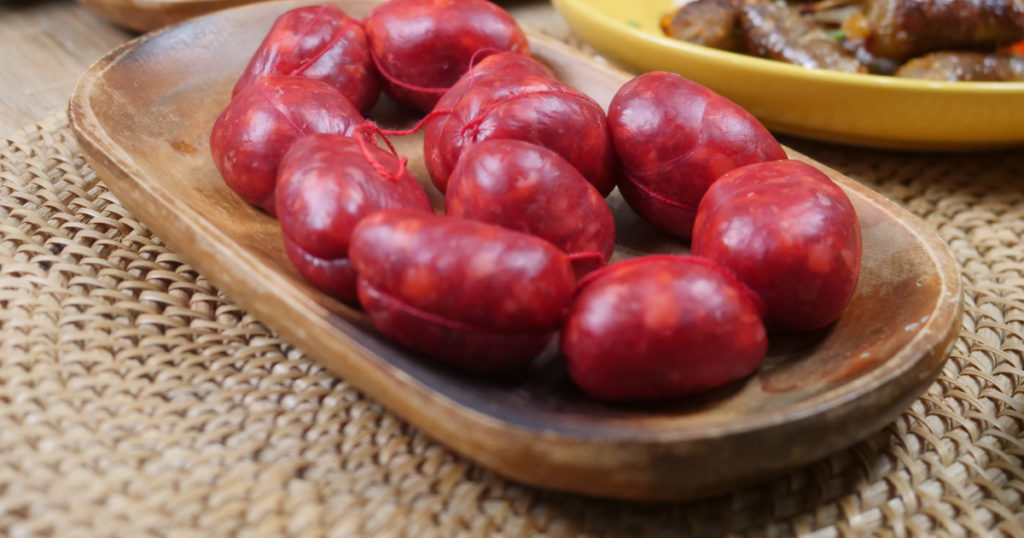
Chorizo de Cebu, also known as longganisa de Cebu, is a beloved pork sausage from the Cebu region. You’ll know it by its sweet, spicy, and garlicky flavor profile. This longganisa hamonado-type stands out with its vibrant red color from achuete seeds and distinctive spherical shape.
Made from a mix of lean pork, pork fat, salt, pepper, sugar, anise liqueur, paprika, garlic, and chilis, it’s encased in hog casings but can also be prepared without them. You typically enjoy this Filipino fried or grilled alongside white or garlic rice, or with puso—a traditional rice wrapped in palm leaves. It’s a versatile and flavorful addition to any Filipino breakfast table.
Longganisa Pinoy Variety 2: Longganisa ng Lucban
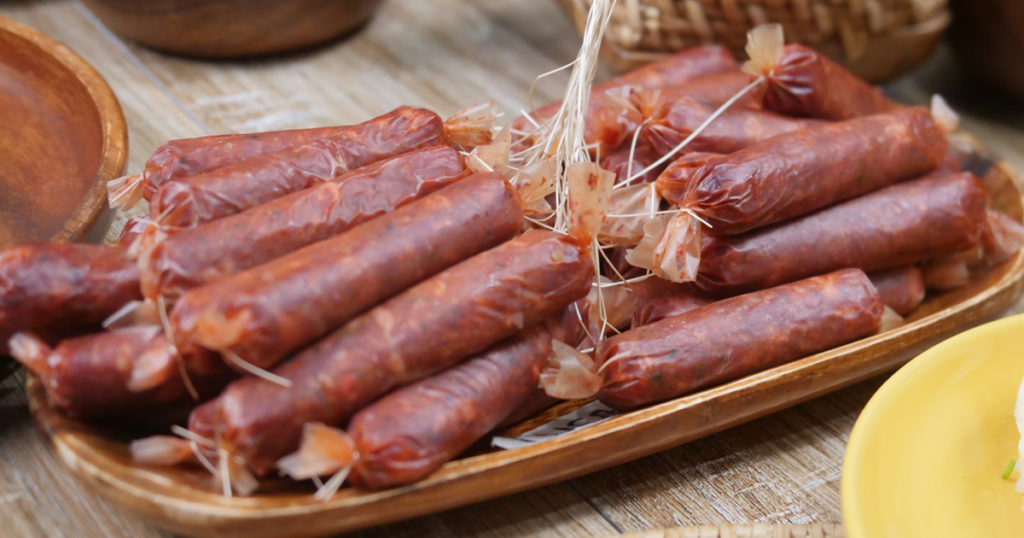
Longganisa ng Lucban is a distinctive Filipino sausage from the town of Lucban in Quezon province, celebrated for its unique garlicky and sour profile. Unlike the more common sweet varieties of longganisa, makers infuse this Filipino longganisa dish with a blend of Mediterranean spices like oregano and smoked paprika, alongside a generous amount of garlic and vinegar.
Aside from the ingredients mentioned above, you usually make this with lean pork, pork fat, coarse salt, sugar, and vinegar, and wrap it in a thick casing, although it can also be enjoyed without the casing. Traditionally served with fried rice and atchara (a Filipino pickled dish), it pairs exceptionally well with Pancit Habhab, another noodle dish that originated from the Quezon province. This sausage’s preparation involves curing the meat mixture in casings, highlighting its robust flavor that’s best savored as a hearty breakfast or a savory snack.
Longganisa Pinoy Variety 3: Vigan Longganisa
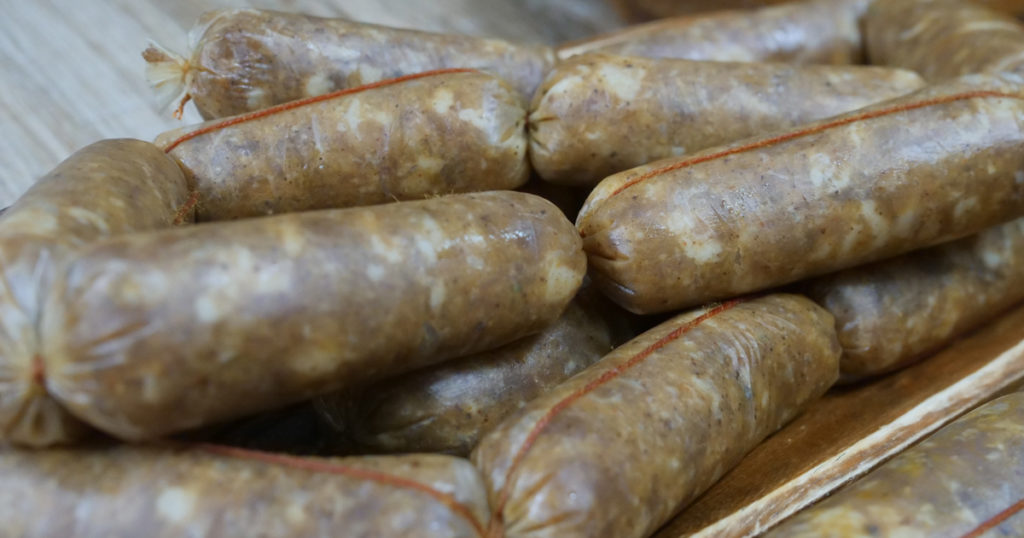
Vigan Longganisa originates from the Ilocos region. When you make them, you hang the sausages under direct sunlight for 4-6 hours to drip dry the fat and excess liquid, then pan-fry them until brown. This method, akin to the traditional smoking over an earthen stove, imbues the Vigan longganisa with a distinct smoky flavor, enhancing its sourness.
Eat it with Ilocos vinegar for an added zing. Have it for breakfast with some garlic rice, tomatoes, and a fried egg for a savory and tangy start to the day!
Longganisa Pinoy Variety 4: Alaminos Longganisa
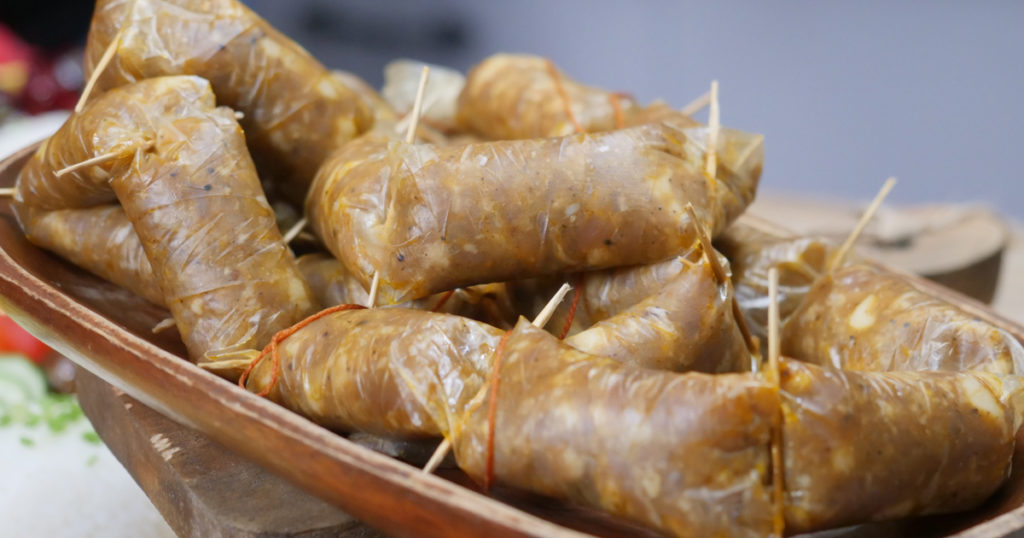
Alaminos Longganisa hails from Pangasinan. It is the perfect little treat for anyone who wants mild flavors and cute, bite-sized portions of food. Aside from it being slightly sweet and having the right touch of garlic, it also has a distinct look.
Instead of the usual twist or string tying these sausages together, makers connect them with little sticks called “buli,” making each string of Alaminos Longganisa look absolutely unique. It’s the kind of detail that adds a dash of fun to your cooking and might even get the kids interested in what’s on their plate.
Oh and a fun fact? Alaminos Longganisa is a star in its own right, celebrated every year at the Longganisa Festival. So, when you bring these Filipino sausages into your kitchen, you’re not just cooking up a meal; you’re whipping up a piece of cultural pride!
Longganisa Pinoy Variety 5: Imus Garlic Longganisa
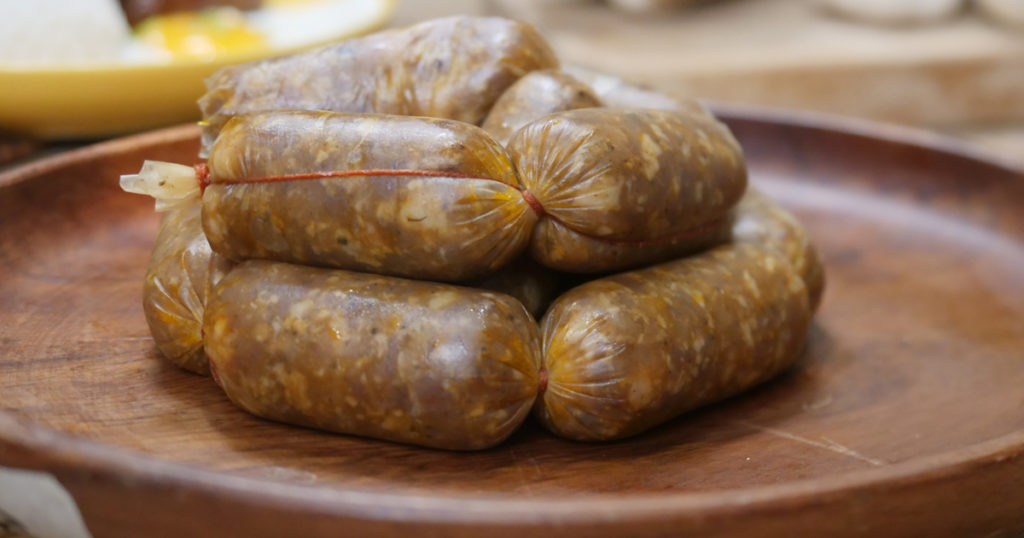
Imus Garlic Longganisa, from Cavite, is one of those Filipino recipes that is a dream come true for garlic enthusiasts. It’s packed with a punch of garlic flavor and has a very bold taste. It’s a recado longganisa, after all. It’s a straightforward recipe that delivers: just combine ground pork, plenty of garlic, soy sauce, vinegar, black pepper, and a touch of achuete seeds for color, and you’re good to go!
You can choose to encase it in hog casing or go for a skinless longganisa variant, depending on your preference.
Longganisa Pinoy Variety 6: Pampanga Hamonado Longganisa
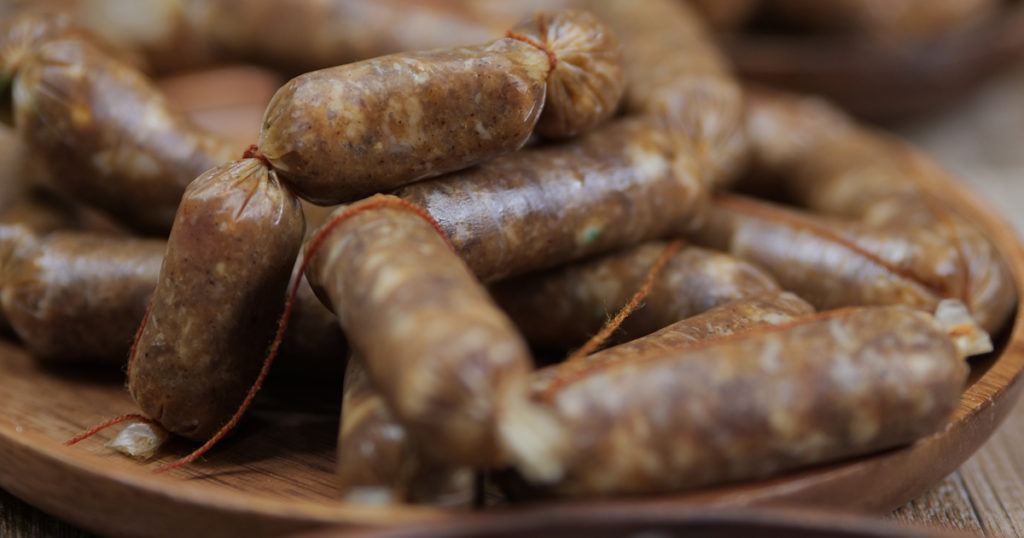
Pampanga Hamonado Longganisa brings a sweet and juicy option to the table. This delightful sausage is known for its rich, hamlike taste that comes from being marinated in pineapple juice. It also has a distinct appearance; while makers often color it orange or red with achuete seeds or annatto powder, the usual longganisa look, this longganisa variant is typically longer and thinner.
Unlike other Philippine sausages that may lean towards the garlicky or spicy, Hamonado is a Filipino sweet sausage, making it a hit for those who prefer this flavor for breakfast. The mixture of ground pork, garlic, brown sugar, black pepper, coarse salt, and a hint of vinegar creates a flavor profile that’s both comforting and satisfying.
Longganisa Pinoy Variety 7: Calumpit Longganisa

Calumpit Longganisa, hailing from Bulacan, Philippines, is known locally as longganisang bawang. This other recado variety in this list is crafted from a mix of lean ground pork, pork fat, and a generous helping of garlic, along with bay leaves, brown sugar, soy sauce, vinegar, salt, and black pepper. Typically, you boil this Filipino longanisa before frying it to achieve the perfect level of doneness, allowing its flavors to fully develop.
Calumpit Longganisa comes in original garlic, spicy garlic, and sweet and spicy varieties. The flavors cater to different tastes – whether you want something traditional or spicy to start your day. With its garlicky profile and touch of sweetness or heat, Calumpit Longganisa offers delicious options to actively customize your experience.
Want to learn a Pinoy longganisa recipe?
Want to start making your own longganisa after reading all about it? Looking to try the diverse longganisa varieties?
Well, you don’t have to go far. Just enroll in Chef Chona Garcia-Laureta’s latest class here at The Bailiwick Academy: Philippines’ Regional Longganisa!
It’s an easy-to-follow class, perfect even if you’re a beginner at making these. And at the end, not only will you be able to make a delicious longganisa Filipino breakfast, you might find yourself posting Filipino longganisa for sale in your social media accounts.
After all, who wouldn’t be attracted to not having to travel to taste their favorite longganisa variants, right? It makes for a pretty good food business!
So what are you waiting for? Sign up at The Bailiwick Academy and start your journey to being one of—if not the best longganisa supplier—in the Philippines and all over the world, today!
—
Keep coming back to The Bailiwick Academy blog for more baking and cooking tips, kitchen tricks, and much more!
]]>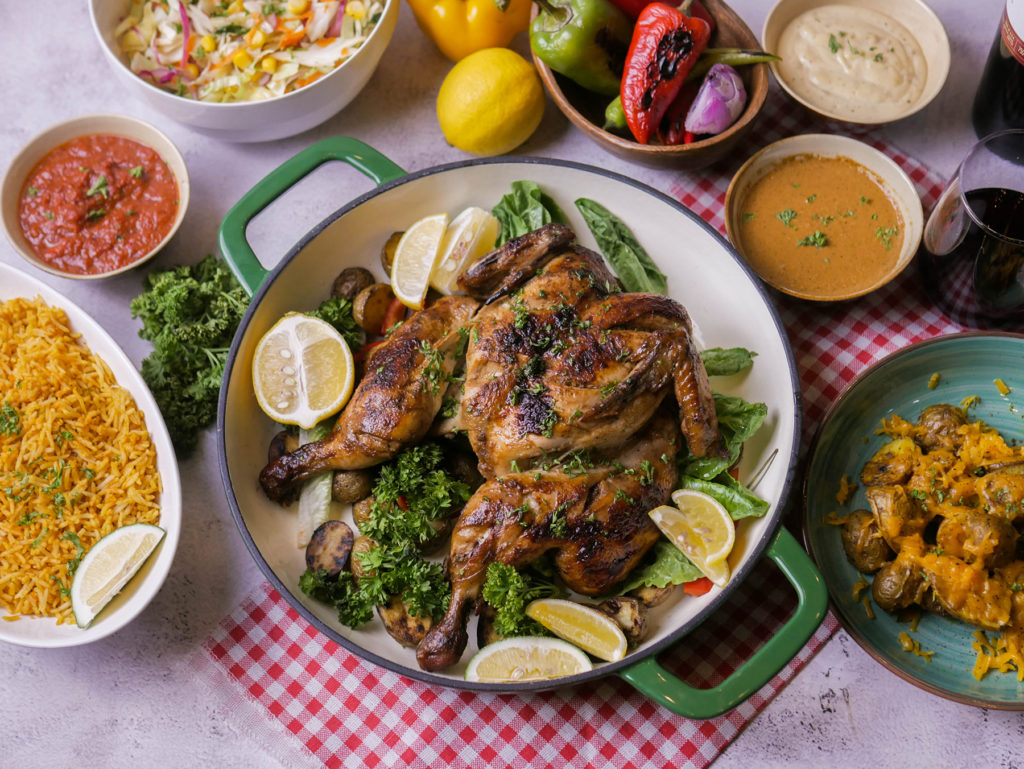
When it comes to chicken, fried chicken is undoubtedly a beloved dish around the world, but have you heard of peri peri chicken? What is peri peri chicken exactly? Let’s just say it’s more than a restaurant chain that serves delicious food in the Philippines!
This fiery, flavor-packed dish is a culinary sensation that’s been winning hearts and taste buds far beyond its African and Portuguese roots. So, let’s dive into the spicy, savory world of peri peri chicken – a dish that’s sure to add some zing to your cooking repertoire! You never know, it could even take the place of fried chicken as your new comfort food!
Peri peri chicken is…?
Peri peri chicken is a spicy chicken dish that is usually made by marinating chicken in a spicy sauce, then grilling or baking the marinated chicken until it is cooked through. It can be made using any cut of chicken, but it is traditionally made with whole chicken or bone-in chicken such as thighs, drumsticks, or leg quarters.
The sauce is called peri peri sauce, which is usually a blend of African bird’s eye chilis (also known as piri piri), garlic, paprika, and other seasonings. The sauce is what gives the chicken its name, as well as its spicy and flavorful taste. I guess this answers what is in peri peri chicken, agree?
Is peri peri chicken different from buffalo chicken?
You might be wondering if peri peri chicken is similar to buffalo chicken. After all, they’re both spicy chicken favorites. Well, that’s true, but there are some differences:
Origins:
- Peri peri chicken has its roots in Africa with a Portuguese influence.
- Buffalo chicken originated in the United States, gaining popularity in the 1960s.
Marinade:
- Peri peri chicken uses a spicy blend of African bird’s eye chili, garlic, paprika, and other seasonings.
- Buffalo chicken typically features a vinegary taste, often made with hot sauce.
Cooking Method:
- Peri peri chicken is usually cooked with whole or bone-in chicken pieces.
- Buffalo chicken is most often made with chicken wings.
If you want to try some buffalo chicken wings, check out Chef Max Nadin’s Just Wing It Class here at The Bailiwick Academy!
Is peri peri chicken African?
Did you catch the information earlier? African bird chili? If yes, then you might be wondering about the origins of this recipe—specifically its chicken marinade.
Well, the history of peri peri chicken dates back to interactions between native South Africans and Christian Portuguese traders. The main ingredient of the peri peri marinade, the bird’s eye chili pepper, was brought to Africa from Brazil by the Portuguese as early as the sixteenth century.
Therefore, the peri peri chicken we know today resulted from the melding of Portuguese and African culinary cultures over centuries. The dish has since spread across Africa and beyond, gaining worldwide popularity—which is why we’re talking about it today.
What makes peri peri chicken unique?
The soul of peri peri chicken lies in its sauce. The combination of bird’s eye chilis (or whatever chili you choose), garlic, herbs, and citrus creates a uniquely tangy and spicy flavor. Whether you grill, bake, or pan-fry, the key is to let the chicken marinate in this zesty sauce, allowing the flavors to deeply infuse.
Eat peri peri chicken with what…?
What does peri peri chicken go with? Well, this chicken dish pairs wonderfully with a variety of sides. Here are some great options to serve serve with peri peri:
- Rice: Plain white rice, coconut rice, lime rice, or even a flavorful pilaf can balance the spiciness of the chicken.
- Roasted or Grilled Vegetables: Think bell peppers, zucchini, asparagus, or corn for a healthy and colorful addition.
- Potatoes: Roasted, mashed, or in the form of fries or wedges, potatoes are a hearty side that goes well with the chicken.
- Salads: A fresh green salad, a tangy coleslaw, or a cucumber salad can offer a refreshing contrast to the heat.
- Bread: Flatbreads, garlic bread, or a crusty loaf can be great for soaking up the flavorful sauce.
- Dips and Sauces: Cooling dips like tzatziki or a simple yogurt sauce can help balance the spice.
- Beans: Black beans, kidney beans, or a bean salad can add a nice texture and flavor contrast.
- Corn on the Cob: Grilled or boiled, it’s a sweet and simple side.
- Fruit Salsas: Mango or pineapple salsa can add a sweet and tangy element to the meal.
- Pickles and Chutneys: They can add an extra zing and complement the spicy flavors of the chicken.
These sides not only add variety to your meal but also help in balancing the intense flavors of peri peri chicken, making for a well-rounded and satisfying dining experience.
Is peri peri chicken healthy?
Yes, this chicken dish is delicious, but is it good for you? Well, it can indeed be a healthy option, especially when prepared with mindful cooking methods. Here’s why:
- Chicken is a great source of lean protein, essential for muscle building and repair.
- The spices used in peri peri sauce, like garlic and chili, have anti-inflammatory and antioxidant properties.
- When grilled or baked, peri peri chicken is lower in fat compared to fried chicken dishes.
- The capsaicin in chili peppers can help boost metabolism, which is beneficial for weight management.
- It fits well into various dietary preferences, including low-carb and high-protein diets.
- If you want to make sure it’s healthy, you can make this dish at home so you can control the amount of salt and oil, making it healthier than restaurant versions.
However, the healthiness can vary based on how it’s prepared and served. As with any dish, moderation is key.
What’s a usual peri peri chicken recipe?
Curious about making some homemade peri peri? Here’s a simple recipe with ingredients to get you started:
Ingredients
- 4 chicken breasts (or thighs for more flavor)
- 3-4 African bird’s eye chilies, or whatever chilis you have, such as Thai red chilies. Adjust according to your heat preference,
- 3 cloves of garlic
- 1 teaspoon of paprika (smoked or sweet)
- 1/2 teaspoon of oregano
- 1/2 teaspoon of salt (adjust to taste)
- 1/4 teaspoon of black pepper
- Juice of 1 lemon for some zest
- 2 tablespoons of olive oil
- 1 tablespoon of red wine vinegar (optional for tanginess)
Instructions
Make the Peri Peri Sauce:
Blend the chilies, garlic, paprika, oregano, salt, pepper, lemon juice, olive oil, and red wine vinegar until smooth. This is your peri peri chicken sauce.
Marinate the Chicken:
Place the chicken in a bowl or resealable bag, then pour the peri peri sauce over the chicken, ensuring it’s well-coated. Marinate in the refrigerator for at least 30 minutes, though several hours or overnight is best for more flavor. Remember, the longer you marinate, the more intense the flavors.
Cook the Chicken:
Preheat your grill, broiler, or oven to a medium-high heat. Remove the chicken from the marinade, shaking off excess, then grill or broil the chicken for about 6-8 minutes per side, depending on thickness, until the chicken is cooked through and has a nice char.
Rest and Serve:
Let the chicken rest for a few minutes after cooking. Serve with your choice of sides, like rice, roasted vegetables, or a fresh salad.
Tips
- Adjust the number of chilies to suit your heat preference, ranging from mildly spicy to super spicy.
- If you can’t find African bird’s eye chilies, substitute with another hot chili or use chili flakes.
- For an authentic touch, add a bit of lemon zest to the marinade.
- Always ensure chicken is cooked to an internal temperature of 165°F (75°C) for safety.
Enjoy your homemade peri peri chicken with its bold flavors and spicy kick!
Want a surefire delicious, restaurant-quality peri-peri chicken recipe?
As a home chef, you’ll love the simplicity and versatility of this dish. You can grill the chicken for smokiness, bake it for convenience, or even pan-fry for a quick meal. And of course, there are so many online recipes for peri peri chicken!
The problem with online recipes is that you’re not sure if what you’ll get is really good—it might be good for the one who made it but not for everyone else. So what can you do to ensure that you really get a high-quality recipe?
Well, here’s your answer: sign up at The Bailiwick Academy and then enroll in Chef Max Nadin’s class, Peri-Peri Chicken!
Enroll In The Bailiwick Academy For Peri-Peri Chicken!
Chef Max’s course lets you dive into the juicy world of this special chicken dish, learning not just to make the chicken itself but also mastering three amazing sauces – Peri Peri, Chutney, and Harissa. Each one adds its own unique burst of flavor to the dish.
But wait, there’s more! A great main dish needs awesome sides, right? This class has you covered with lessons on making Roasted Baby Potatoes, Flavored Rice, and a refreshing Coleslaw Relish.
The best part? It’s designed for beginners and offered in both English and Filipino, making it super accessible.
So, if you’re looking to elevate your cooking game or add a star dish to your menu, this class is your ticket to a world of explosive flavors and rave reviews. Say goodbye to the hit-or-miss of random online recipes. Sign up at The Bailiwick Academy today—you never know, this might be the beginning of your own peri peri chicken franchise or food business!
—
Keep coming back to The Bailiwick Academy blog for more baking and cooking tips, kitchen tricks, and much more!
]]> (@jamesdimitri)
(@jamesdimitri)